End of 2022 – Chiaroscuro of Thoughts
The end of every year is always eventful. There is a cauldron of the good, the bad and the ugly being churned different ways in all parts of the world. The change of seasons heralds the oncoming of quakes and snow, eruptions and avalanches, and sometimes, fires and tsunamis.
The tectonic plates and volcanoes get active this time around globally, especially in Indonesia. I still remember watching the inundated parts of Aceh and elsewhere in December 2004, lying on my bed in a hotel in Bahrain. That was probably the first time I got the word tsunami etched in my thoughts and printed in my mind’s dictionary. The TV visuals gave me impressions of a flood, but the thick-fonted tsunami word caught my attention as it did with everyone’s. More tsunamis were to follow in Decembers in the coming years, including the 2018 one triggered by the Krakatao eruption, killing a few Indonesian singers among others.
I have felt several quakes while at home and at workplace in Indonesia. The latest one was last month, in November, when a 10-15 seconds jolt scared everyone out of their busy realms. I was on a skyscraper the first time I felt a quake, but that was back in 2009. I didn’t go back to my 28th floor apartment for more than an hour, being petrified by the swaying experience. The latest one and the way I reacted to it showed my Indonesian ignorance of such events. I am used to it in a way that the locals are. Jakarta and its satellite cities always feel tremors when the epicentre is nearby. So far, no one has been affected by these in any manner (except for the terrifying tremors). To the outside world, an earthquake in Indonesia means a serious disaster of high proportions. Few take care to read the details and find out who is affected or who is not. What kind of buildings are damaged and what still stand intact. So, I get flooded with messages just like aftershocks. Some have even asked me to leave the country. Ring of Fire that we are in!
The quake in Cianjur was followed by another one within a week or so, again jolting me at workplace. There were other quakes, elsewhere in the world as well as volcanic eruptions between 21 November and now.
**********************************************************************************************
After the death of some unlucky souls in the Cianjur quake, news of tragedy with details ad social media clamour started pouring in. My 7 year-old son has not quite grasped the concept of death yet. I have already shown him dead ants and roaches several times to explain the word ‘dead’ and that the dead do not come back to life again. The lifeless insects helped him understand the situation better, but human death still took its time to get into his deeper senses. During a pre-pandemic trip to India, I had asked him to pay respects to my late father (his grandfather) in front of his photo hung on the wall. He was 4 then, and was far from making sense of the idea. I never cared to mention the word ‘death’ to him that time.
A few days after the Cianjur quake, his IT teacher, a gentleman well-liked by all children including my son, passed away unexpectedly. His class teacher arranged for a prayer session when some of his classmates cried. Back home, I told him that his teacher is ‘dead’ and will not come back anymore. I stayed away from beating around the bushes and circumnavigating around the islands of vocabulary and expressions as this might even confuse him. His face looked a bit glum, and he kind of seemed to coat himself with reality. He didn’t want to talk about it anymore so I remained silent on it. He never talked about the deceased teacher after that. Can I take that for confirmation of an important part of life’s education being achieved?
**********************************************************************************************
December is always home-coming season. It is also a brief escape from Indonesia’s lousy weather. South India is definitely one of the best places to be at this time of the year. It does not carry the heaviness of the snow-cold central-north Indian air, but is rather cool in the morning and night and mildly hot during day time. This time, I decided to spend a day in Singapore before taking the connecting flight to Kochi (India, not Japan).
The sojourn in Singapore was partly washed out with the city-state receiving more rains than Jakarta these days. The idea was to take my son to the Zoo which is one of the most well-maintained ones in the world. Holding umbrellas, we managed to say hi to some occupants like cheetahs, rhinos and zebras. Having the zoo visit forcibly cut short, we found refuge in a rather posh location called The Jewel, which is a mall attached to the Changi International Airport. Changi itself is a tourist destination as it is more than an airport. Entertainment areas are so plenty that a layover of hours will not leave you bored and stressed. The Jewel is the latest addition to the attractions. The world’s ‘tallest indoor waterfall’ steals the limelight here. People spend plenty of time at this spot to take pictures.
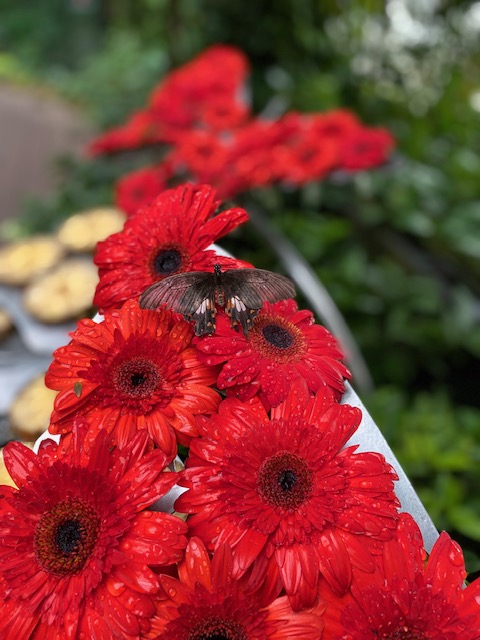
From the Butterfly Garden in T3, Changi International Airport

The Jewel, Changi
Singapore has always been a 1-2 day destination, and it will most probably remain the same for some years to come. It will only be my young son’s needs to get into theme parks and educational centres that may extend the number of days of stay. I have always been enamoured of the clean streets, well-organised facilities and efficient ways of handling things. However, the city is a bit too mechanical for people coming from bigger nations where life is not so fast-paced. The sound of strictness can at times be harsh than welcoming for tourists. The orderliness of a country is best followed by long-established culture and tradition rather than by imposed rules and regulations. This is where Japan and Singapore differ. In Japan, you mingle with the locals in being silent, being careful in public without being asked to. You do not eat on the road, you do not throw plastic here and there, you do realise that there are not enough public dust bins so you have to dispose of waste at home sometimes. In Singapore, that spontaneity is often missing. The metro trains are crowded in both Tokyo and Singapore. Where one is silent even with a crowd, the other can be cacophonous.
**********************************************************************************************
Another flight over the Bay of Bengal completed and we were in Kochi. It takes about two hours’ car ride to reach my home in Palakkad, central Kerala. There was unusual rain for two days forced by depression over the Bay of Bengal, but things got back to sunny and clear skies soon. The mornings in December are lovely, carrying cool air and mild breeze in southern India as opposed to the misty cold weather up in the north. This is the time birds criss-cross in the sky with their plumes showered with golden rays.
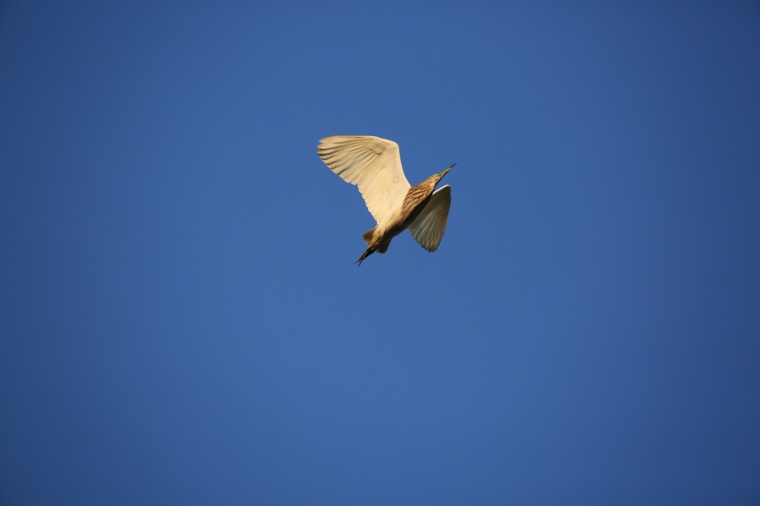
Indian pond heron in flight
Urban wildlife in India is one of the best of its kind. Staying within the compound of my house, I was ale to spot several different species of birds looking for their breakfast. The crows are the most ubiquitous of birds in the country. They can be seen anywhere, any time. Their unity is seen when they are seated in rows on electric wires or on tree branches. They often fight with kites for space and food.

Crows on electric wire
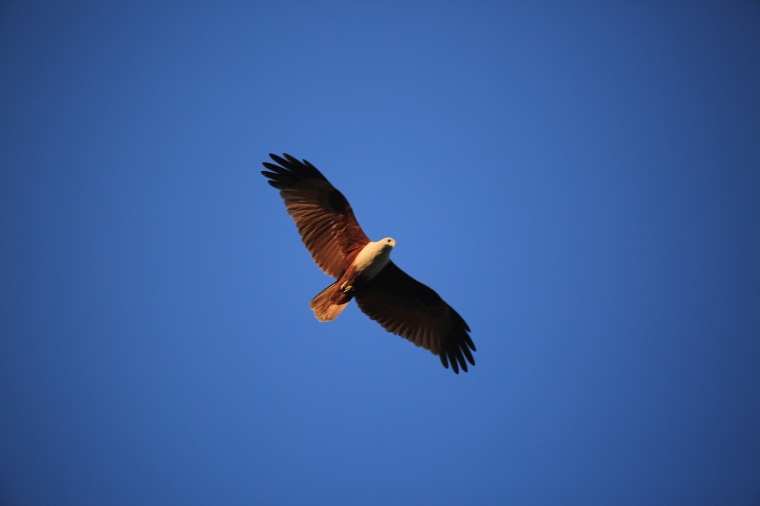
A Brahminy Kite in flight
Peafowls have been roaming around urban areas in India for quite some time. It was around 2015-16 that I came to be aware of their presence in my neighbourhood. What was once a feast to the eyes during wildlife safaris is now a farmers’ nightmare as the birds eat and destroy crops. Needless to say, these beautiful creatures are forced into concreted terrains after habitat loss and food scarcity. I spotted some of them the other morning, perched on billboards and on rooftops of nearby restaurants. The ones that do the foraging and scavenging are usually females. The blue-bodied, artistic-feathered males only make selective appearances.

A peahen on a billboard
Passport, Post-Pandemic
I got ready to use my passport again, after two and a half years. This was the longest gap I had without travelling international since 2001. When my Europe trip got cancelled in 2020, there were clear feelings of disappointments, but the passage that Covid-19 took convinced me that this is a time to reflect on my previous travels, stay safe and spend more time reading.
When India reopened international flights on 27 March, I was at least 80% sure I could make it there during June holidays. I was in anticipation of this, and confidently booked my tickets as early as February. By that time, Singapore Airlines had started flying to Kochi on a reciprocative arrangement with the Indian government. The flight that I had booked was a Boeing 737-Max 8 jet, my first on board. Yes, the killer aircraft that took hundreds of lives in the last 2-3 years. After the crashes of Lion Air and Ethiopian Airline, I had vowed not to fly Max. During the peak of the pandemic Boeing managed to get the ban on its ultra-modern medium-sized aircraft lifted. Some articles claimed that the MCAS (Manoeuvring Characteristics Augmentation System) which was faulty in the cases of the two crashed airlines was fixed and the problem solved. Slowly, airlines the world over started reinstating the aircraft. Singapore Airline being one of the most trustworthy players in the industry wouldn’t do any nonsense to jeopardise the flight of its loyal passengers. So I was convinced. Then flew for two dinners over the Bay of Bengal. Home at last.
India is an open country now. It’s the same Kochi airport I had seen and gone through in the winter of 2019, shortly before Covid struck. Except that everyone was wearing a mask. I was curious to see my countrymen wearing masks as it is not something people are used to there. In South-East Asia, people (not everyone) wear masks to schools and offices when they have cough or cold. I was one of those chosen ones to undergo RT-PCR test upon arrival after handing over my documents from Air Suvidha portal. The nurse told me that they would inform me of the results over phone in two days. There has been no news about it, so I guess they will only contact the Covid positive passengers.
Outside the airport, life was back to nomral. Hardly anyone was wearing masks, people going about their business as usual. Drivers and local people sipping tea, juice, biting bajji, vada. Taxi drivers waiting in anticipation of customers; their eyes telling stories of the jobless days that are past. Against the usual one-night sojourn in Kochi, I decided to head straight to my hometown, Palakkad, in central Kerala after landing at about 10 pm. Passed through the never-ending road work on the highway though was happy to use the tunnel under Kuthiran hills. The tunnel work had started some years ago, and is still in the finishing stages.
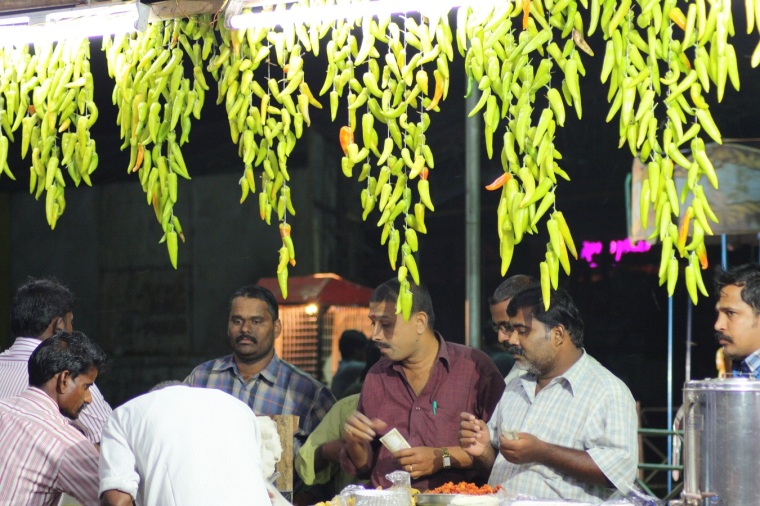
* * * * * * * * * * * * * * * * * * * * * * * * * * * * * * * * * * * *
Every time I am in Palakkad, the developments I notice are in the forms of new shops, restaurants and all sorts of private establishments mimicking India’s metro vibes. Public places and utilities either remain the same or get even worse. The municipal bus stand is a case in point. It lies like a no man’s land where buses make a round and use the space for a U-turn. Upon seeing that, I felt the old one was better. It at least had an outward look of a bus station with a courtyard full of snacks shops and magazine and newspaper sellers. The condition at KSRTC bus station occupied by state-operated buses is no better. And the same thing could be said about the streets where pedestrians have a hard time walking along, often brushing with vehicles that pass precariously. Shops and other business establishments galore and space gets consistently congested.
The Palakkad fort and its surroundings are always in my itinerary when I am back in my hometown. It’s a place for joggers, temple-goers and people who use it as their rendezvous. I like to watch people’s determination here. Ladies and gentlemen in their middle ages with plumpy backs and bulging bellies exerting tremendous efforts to walk as fast as possible in a routine project. My foreigner wife was once amused to watch ladies wearing bulky churidars and saris while doing the walking. She was awed by their ability to do this and compared it to Indian film heroines dancing in saris. The fort is in good condition, and so are its surroundings. The grass around the moat and the pathway in the middle are kept clean. This is probably the reason that the best public place where people can feel comfortable in Palakkad is the fort. After all, it is a heritage site under the supervision of the Archaeological Survey of India (ASI). And, yes, I have several times photographed the cranes that sit on the lawns and the cormorants that hide under the moat’s water.
I am an alumnus of Government Victoria College, one of the best in the state of Kerala with more than hundred years in existence. It’s a campus where many generations have created unforgettable memories to carry with them wherever they are in the world. It’s a place of achievements and a place that has given birth to statesmen and eminent politicians. This is another place I visit without fail during my visits. Unfortunately, till 2019, like any other public place, it had been left uncared for. Flag posts and decorations of student political wings, dirty wall writings, unpruned grass in the corners and the smelly toilet (same as it was in the 90s and probably before that. We nicknamed it the concentration camp) greeted me every time I visited my alma mater. But this time, there were some changes. The flag posts were gone. Wall writings mostly disappeared. The garden presented itself in a more orderly manner. I forgot to go to the toilet side, so can’t say anything about it. All the more, it is in a very presentable state, and I wish that the authorities keep it that way forever, and even better.
Eating Indian food in Indonesia is an expensive affair. For the price of one masala dosa you pay in downtown Jakarta or Bali you could eat three to four in Palakkad. That is why homecoming has a delicious and gastronomical purpose. Over the past few years, Palakkad’s food scene has undergone vast changes. Names like London Bakes & Grill, Uptown Grill, NMR and many other north-Indian, Chinese and Arabic cuisine joints have popped up and have a carved a niche in the town’s gourmet world. Not to mention the entry of western entrepreneurs like KFC, Pizza Hut and Dominos Pizza. I grew up as a teenager in a Palakkad where people used to brag about just a handful of places where they had dined and made the most of their evenings. These names were Kalpaka (not sure if it’s still there), Kalyan, Nalanda, Ashok Bhavan and Hari Hara Putra. These were in the early and mid 1990s. And the dishes were the most conventional and pretty basic mixed variety of south and north Indian delicacies. Like you name it – paratha and chicken curry, chappathi and beef curry, or butter chicken, biryani, pulau, and if it’s veggie, dosa, idli, vada, uppuma, blah, blah, blah (as the waiter in Ashok Bhavan would spit it out). Before my trip, I stumbled upon a food vlog on Youtube that showed a dinner in one of the modern restos in the town. The video mentions ‘Hari Mirchi tika’ that confirms the transition Palakkad has made and also the filtering of more sophisticated north Indian varieties downward south. The very name reminded me of Amitabh Bacchan’s film where he teaches a Brit chef to pronounce a difficult sounding Indian dish! I don’t think this kind of innovative north Indian variety entered the Palakkad menu any time before 2015 or even 2010.
Anyway, I didn’t miss going to New Ashok Bhavan (name changed after after having a new owner) for Ghee roast, to Hari Hara Putra for bajji and sweets. And, to Indian Coffe House which is more of an ordinary restaurant these days compared to the evening meeting place for the town’s literati.
Right now in Jakarta, I am enjoying the gulab jamun and the pakoda that made its way here over the Bay of Bengal. Both will run out by tomorrow afternoon, I believe.
Travel of Transformation
A year ago, when my Year 12 students had their graduation ceremony over the popular meeting platform, Zoom, there was a feeling of loss. A bigger one at that time compared to usual annual graduation ceremonies where leaving the school and preparing to become alumni can force tears. The big addition here was the absence of physical presence in the decorated hall with togas and hoods filling the environment. When the new year started in June 2020, I narrated this to the current Year 12s and assured them that things would be back to normal when they get ready for their own big day. Come April 2021, we had another Zoom session. I learned to learn that prophesying these days is a risky business.
Ever since the start of the pandemic, people have been estimating, predicting, calculating and then when the predicted day neared, been correcting themselves with renewed ones. The symbolic ‘end-of-the-pandemic’ thought and what now appears to be a sought-after dream of ‘back to normal’ days is slowly educating everyone on life’s harder lessons. It is what we have been calling ‘the new normal’. The new normal has taken various shapes across the globe, depending on factors such as Covid-19 case numbers, curve flattening, vaccination and agreement on travel bubbles. It is still undergoing changes in definition, interpretation and the ways in which it is being conveniently, but sometimes unwillingly observed. Whatever it means to people around the world, it is still far from being normal. The normal many of us may have forgotten.

That huge change from the past to the present, from normalcy to new normalcy, effected by a gap of less than two years is a travel undertaken by every human being on earth. The negatives from that transformation may outweigh the positives in many ways, but the lessons conveyed by events of either quality may lead us forward in the years to come. When we stopped flying internationally, at least for leisure travel, we started exploring things that are readily available in our front yard. Domestic travel gained currency and we enlightened ourselves more on our own cultures, geographical details and things we probably did not know existed. We also discovered how hassle-free is flying within our own countries – sans immigration check, customs check and queuing for visas on arrival. The airports and the airlines complemented this with their stricter and disciplined health protocols. With this new way of exploring one’s own country, the concept of slow travel has come to the spotlight. Slow travel enables people to focus on one destination at a time, seeing and learning more about its features, its people and its food. During my first air trip after the start of the pandemic in December 2020, I was able to get to Flores and go on a 3-day Komodo National Park tour. Flores has other beautiful gems to offer, but I decided to stick to the Park and cut down on wandering further. There was immense satisfaction with the amount of time spent with the dragons, the villagers and around the hundreds of hills that dot the Park’s waters. My normal itinerary would see me getting up early every day for numerous day trips from hotel.

But then, not everyone is lucky enough to travel these days. For many, whether they are a pilot or a street vendor, this is like a prolonged winter when the wherewithal is highly restricted in order to save for an uncertain future. Job losses and business losses have been the major concern of this dark period; and these miseries have not ended yet. As a teacher, I have first hand knowledge of some friends and acquaintances who have lost their jobs and are currently on the hunt for positions. These teachers lost their jobs when students discontinued their eudcation in their particular schools. The students’ dropping out was caused by parents’ job or business losses. Thus, it works like a chain, making it very clear that tumbling cards can affect professionals from any field or industry. Despite these losses and unprecedented miseries, many people have found other ways of existing, least thinking about labour dignity or social status. They have come down their ranks in order to adapt to a universal situation where humanity’s biggest bet is to survive with the best tools available. My usual taxi driver’s case (in India) is an example of a brilliant way of switching from one calling to another in times of trouble. He started selling vegetables in the street and kept his house afloat. The stories of air cabin crew in developed countries like Singapore have been no different. Their struggles are great, tough and unimaginable to many, but are not permanent. This adaptation might work wonders for them in future. Back when I was in the Gulf, I had heard and seen stories of poor chefs transforming themselves into successful restaurateurs and entrepreneurs.
Financially, the world is currently both a richer and a poorer place. The millionaires have doubled their income as online businesses prospered, propelled by the need for technological assistance and software developments in a physical distancing era. Zoom became the king as it dominated computer screens in boardrooms and classrooms and wherever people needed to meet each other virtually. Needless to trumpet the consistently resounding success of other social media platforms like facebook. Jeff Bezos’ Amazon and many other online business ventures that sell essentials profited from the conditions of the time. Anything that has technology and essentials up its sleeve continues to win during this stretched pandemic period. On the opposite side of it all lies poverty’s ugly face – the small scale businessmen, the drivers, the vendors and many who cannot work from home or whose job cannot be executed with a keyboard and a monitor. Nevertheless, this experience should augur well for defence against possible future calamities, disasters and even repeat pandemics. The lesson is – during global disasters, the super rich stay super rich, the rich stay rich, the rest either overcome their troubles or go through extended ordeals before swimming back to the shore or perish on the way. Covid-19 has offered this third kind an unlikely ultimate survival guide.

This rich-poor divide is not just about individuals, but also about nations, the developed, the developing and the under-developed. I was flabbergasted to see the World Happiness Report being released even during these times, but had no surprises in noting down the countries in the top 20. All of it are from the developed world, with population of a few millions. Still not sure if this survey is relevant to the times.

Listen to this blog through a podcast on Spotify – https://open.spotify.com/show/0jIyj1q5oZWmrUGcmTlRMS
No part of this article may be used or reproduced without written permission. Copyright Pramod Kanakath 2021
The Lockdown Notes
One thing that is clear is we are all living out a reality that rivals sensational films by tenfold. In the beginning, we talked about ‘that wild market’ and Wuhan very confidently. Months later, we are forced to recontemplate on the source of the virus. From February onward, the word ‘corona’ has been on everyone’s lips, whatever the topic of the talk be. Whether you talked about astrology or recipes, corona barged into the discussion one way or the other, finding its definite link. Just like it got into the bodies of millions and made the world come to a near standstill.
People, both educated and not so educated, only mention ‘corona’ when referring to the current problem in their daily talks. Other references such as the coronavirus, COVID-19 and Sars-Cov-2 (least used) fade in comparison as C-O-R-O-N-A became the undisputed word of the day every day. I believe it may have dethroned the word THE to become the most used English word in 2020. This unceasing use of the word itself has created a fear factor in people’s minds. It has given the disease the status of an established ogre to be used in future to scare away children, violators and criminals. I was curious to notice dual mentalities among cultures across the world in terms of looking at the word. A part of the American population started rejecting the Corona brand beer after the virus gripped the world. On the other hand, in certain countries like India and Indonesia, some couples named their new-born babies Corona and Covid. While corona itself is not a negative-sounding term (if you look at its other meanings), the timing of the naming can play a crucial role in determining its acceptability in the society. As for the beer, the owner as well as the drinkers deserve our pity.
Whether it be in India or in Italy, Australia or America, people learned or were forced to learn two things: social distancing and washing hands. In the wake of the pandemic, these two commonly learned practices were made to look like some phenomena. The tutorial videos that appeared on different websites and social media platforms exposed our ignorance of these skills or lack of knowhow on their effective employment. We are too social (Man is a social animal, as they taught me in Economics and History) to distance ourselves from each other. We are too busy to wash our hands for twenty long seconds. The WHO once amended the expression ‘social distancing’ and used the term ‘physical distancing’ in order to emphasise the importance of being in touch via the social media and by other means except by meeting face to face. This is a necessity to upkeep our mental balance during a time when we all lead a locked down life inside the four walls. The balcony meetings with songs in the Italian housing clusters inspired similar enthusiastic social interactions from safe distances.
What instilled a staunch sense of fear among people who dwelt on complacency in the early days is the virus’ egalitarian spread in world societies. A Prince and a Prime Minister, celebrities and cine-stars, owners, employees, workers and beggars received a dose of the corona that knew (and knows) no differences between human bodies. By the end of March, every country and every human being was affected by the pandemic in one way or the other. People who lived in hotspots found themselves to be prisoners of a different kind. It was a matter of survival amidst plenty. There was no lack of food, no lack of any kind of amenities, but they could not touch them with confidence. They could not get out to see a sky that was bluer and more pristine. The virus did not make a huge impact in the South-Pacific islands, but their biggest source of income – the tourists – was missing. This dealt a heavy blow to the islanders who might soon find themselves in Captain Cook’s days if not cared for.
Education in the days of the coronavirus has been revealing massive inequalities among different sections. The Zoom sessions keep the privileged learners engaged in their own cosy home environments, making sure they do not miss lessons at all. This is not the case with children in remote areas and slums who are not yet initiated into digital learning, or who cannot even afford to buy digital gadgets. It is good to see the UNICEF working with governments in different parts of the world including Indonesia to arrange for radio and television lessons. The photos that appeared on the organisation’s website showed cheerful faces seemingly enjoying what they were listening to on radios. Despite such efforts from different bodies, there are still millions of children in the developing world waiting for remote learning to reach their doorsteps.
As for those with Zoom facilities, it is not all a rosy world either. A case in point is the preschool and the kindergarten children’s online learning. At a time when adults whine about ‘Zoom fatigue’ and cumbersome online meetings, it is only left to our imaginations how little children can cope with learning from screens. I have been watching my 5 year-old son getting his kindergarten lessons via Zoom for the past 2 months. Seeing his teachers and classmates in a virtual classroom setup did not interest him much. He was stuck in an uncertain world for the first month; each of his glances at me and at his mum enquiring about the school. Zoom was not school for him. He missed his proximity to daily beloved characters, sitting in cirlces with them, jumping around, playing pranks. Though the teachers repeated rhymes and corrected the additions and the subtractions, the atmosphere was not the same for him. As the practice progressed to its second month, the ‘new normal’ dawned on him, slowly though. His nanny played a vital role in convincing him of the continued presence of his teachers and classmates. As his normal companion to school, she was able to assure him that he would not be cut off from his tiny tot kingdom. It is an art parents can learn from loving nannies.
Lessons apart, my son’s world has been changing slowly elsewhere. He has been finding it odd when we ask him to wear a mask each time we have to go out and ask him to wash his hands each time we get back home. Of late, he has been disappointed that we do not take him to his favourite mall nor to his grandma’s house. A few weeks ago, I decided to take him to the supermarket inside his favourite mall which was allowed to open (as all supermarkets were), to give him a first-hand experience of what the mall looks like these days. I was expecting him to learn for himself that papa and mama had not been keeping him away from any of his loved things and places. As we entered the mall and headed to the supermarket, we saw dark corners everywhere. The supermarket was the only place that was lit. I studied his face at this time. He was viewing the differences. He could not probably locate his must-visit play area that was shrouded somewhere in the darkness.
My son has sensed the changes, but talking to him about the coronavirus will be futile. I am documenting his life’s progress week by week. Sometime in the future, he will be able to see and perceive that part of his childhood was spent during a pandemic the world reeled under.
The Charm of West Java
Nature’s most beautiful places are mostly hidden. Some are far away and some pose a bit of a challenge to access. The curiosity to see them itself increases their beauty multi-fold in our minds. However, talking about West Java, natural beauties are aplenty and they are not too far away from cities and towns to reach. West Java is a mountainous region, replete with rainforests and lakes and volcanoes. Nature abounds in these geographical formations and spreads their visibility to nearby towns with the swell of mountains and the spiralling of pine trees. I usually reach my workplace early morning, and on days with clear skies, the twin mountains, Gede-Pangrango’s outline in the orange horizon catches my eyes for minutes before I settle down on my desk with a cuppa coffee.
Like any Jakartan who would love to get out of the foul air that taints eyes, ears and nostrils, I used to drive toward Bandung and Puncak during my early days in Indonesia. The lines of cars got long steadily and these two green spots were ridden with Jakarta number plates. As options varied year by year, Sukabumi started taking a prominent place in the weekend getaway radar. Less renowned than its summer-retreat famed neighbour, Puncak, and less opted for because of its remoteness and trafficky route, it has not been able to woo weekend travellers.
Lake Situ Gunung. That’s where crowds do not flock. If you had a chance to view it from up above, it would look like a small bowl of water held between forested mountains and a symmetry of pine trees. The air around the lake is very silent at any time of the day. When the occasional grumblings from the crickets and the cicadas rise up, there is a mingling of the fauna and the flora.
Though the lake and its surroundings look pristinely beautiful at any time of the day, the best time to take in the atmospheric views is just before and during sunrise. When rains pour down overnight, early mornings can be very misty and it creates layers of white sheets just above the water. Once the first rays of the sun descend on the valley, they mingle with the mist to transform the entire nature into a spectacular scenery.
I reached here around 4.30 to witness a ghostly form of the trees, the mountains beyond and the lake itself. Up above, the moon was still pretty bright though getting ready to give up the spacial realm to a mightier force. Its reflection on the still water was a spectral sight. The landscape in front of me wore a dark shroud reflected by the lake in clinical precision. The outline looked like a giant bowtie stretching from left to right with the twin mountains in the background.
Come 5 am, the sky was slowly getting bright, revealing the greenery in front of me little by little. The mist was pronouncedly clear among the trees. It seemed to flow in a milky white formation, blending in with the darkness to produce a contrast. Another 15 minutes, the first rays got reflected by the clouds above, brightening the air around the lake even more. That revealed a small island in the midst of the lake with beautiful plants. The mist got even thicker beyond the island where the trees are, uncovering the outlines of men. There were two, or three, near a makeshift tent, sitting on their haunches. I wasn’t sure what they were doing, but then, all of a sudden, one got up excitedly with a rod, trying to lift something from the water hurriedly.
The fishermen had been there all night. They were both patient and persistent to get a bounty that would fetch some wherewithal for the week. These fishermen come from remote Sundanese villages around Sukabumi and some as far away as Pelabuhan Ratu. Some lakes and rivers are indentified by certain fishing communities as ‘their own’. That’s deemed to be more of a nature’s rule than having anything to do with legalities.
The sun got up in the sky, but being cloudy, I only got the brightness, not the light itself. The dark shroud was now metamorphosed into a green livery. The mist continued to play the background music and the moon started to fade into the sky to return later at night. Behind me, the tall pine trees were still silent, standing majestically, dwarfing me by a mile skywards. They were symmetrical, and when I turned around to them from a distance, I could see their brilliant texture reflected in the lake. The boats anchored near the banks had not come to life yet.
An elderly gentleman, who was one of the fishermen on the island, walked toward the bank. I smiled at him, hoping to catch a conversation. I asked him if he were happy with the catch. ‘Lumayan’, a smile flashed and off he went as he told me he still had to check a trap somewhere beside the lake.
When in Piran – Photo Essay
In the port town of Piran, south-west Slovenia, the Mediterranean touch gives you a quick feeling of Italy. As the bus winds down the labyrinth and drives down to the boat jetty, I enter that different world, a change from the Alpine Slovenia I had experienced a day earlier. There’s a flotilla of yachts with their masts hoisted in resemblance to the structure of nearby renaissance buildings with red roofs. It’s a sunny Friday morning at the beginning of summer and some shops are already open for business, but most restaurants are yet to wake up. The water is quite calm and still, so are the yachts with their symmetrical white appearance.
I walk along the yachts toward the Tartini Square where life will be in full swing at mid-day. In the morning, it is mostly deserted. The concrete floor and the air around the Tartini statue are cool. I pause for a few minutes and snap the Municipal Building a few times in the morning brightness.
Here at the Tartini Square, an oval atmosphere wraps you in a historical touch. What was once a harbour for fishing boats, the Square now attracts tourists and stands as the face of Piran. The Town Hall with its white facade is unmistakably the first to capture one’s attention. Standing at this Square I raise my head and get a snail’s eye view of the tops of the buildings and the blue summer sky. Moving a bit further, Giusepe Tartini comes in between the tower of St George Church in the distance and me.
Giusepe Tartini was a Venetian violinist born in Piran in the 17th century, at a time when Piran was part of the Republic of Venice. Viewing the statue in the same line with the church tower gave some photography opportunities. At a staged angle, you feel like the violinist’s bow is turning the time on the tower clock.
The sun gets hotter from mild to strong and when the clock strikes 11, I decide to have early lunch. Walking along the esplanade on the other side of the Square, I still find closed restaurants. The esplanade leads all the way to Hotel Piran which stands at the end of the street like a historical vanguard who has witnessed many an event. It was built in 1913.
There is one restaurant open next to the hotel. I straightaway walk into it and order fish and potato and some beer. More than food, I am entertained by hovering seagulls, scores of them, flying criss-cross above my head. Sitting on my comfortable restaurant chair, I engage myself in a left-handed wildlife photography. The white plumes with the azure sky background and the occasional white clouds floating above is something not to be unnoticed. Somehow I feel that seagulls are part of Piran’s identity as they may be all over the Mediterranean beaches.
There are no beaches as such in Piran, but only shallow water areas close to the land. This has given birth to creative ways of using the sea for recreation and sport by the locals. The picture below gives ideas of natural swimming pools. Such ‘pool steps’ are there all along the esplanade and families make the most out of a summer day here.
Yachts and ferries pass by the port frequently. Somewhere in the distance, speedboats leave white, foamy trails in different directions.
Lunch finished, I make my way to St. George’s Parish Church. There needs to be a bit of trekking up before reaching the church. Inside the church, I climb wooden steps inside (nearly a hundred of them) winding all along. Once I reach the top of the bell tower, the bird’s eye view clears up. I am on the other side of the Tartini Square now. It feels like a transformation from life to existence. Active to Passive.
Towards the west, the red-roofed village spreads out into the Adriatic Sea. The buildings clustered together as if it were a show of unity in defence against a common enemy.
The north-east view provides some exciting scenes. Down below, on the church’s fortress lawns, some tourists take in the views of the ocean, while a lady swimmer does a free-style on translucent water.
Toward the west, a seagull perches on a concrete cross making it a vantage point. The vast blue ocean next to it provides an excellent background for viewers from the top. Slovenia only has about 46 kilometres of coastline and Piran is one of the best places to enjoy the seaview. The nearby Portoroz, Isola and Koper are also worth a visit.
I spend more time here than the other tourists with whom I climbed to the tower. The ocean views are charming, soothing and they let you reflect on your life, wherever you view them. I notice a seagull perched on the church cross for quite a long time. It doesn’t move, just like the concrete cross doesn’t. Reflection.
Practical info: Buses are available from Ljubljana Bus Station. A one way ticket costs about 11 euros.The journey takes one and a half hour to two. Buy tickets here- https://www.ap-ljubljana.si/en/
Flight: I flew Lufthansa from Jakarta, Indonesia, transiting in Singapore and Frankfurt on my way to Ljubljana. Some of the major transits on the way to Ljubljana are Frankfurt, Munich, Zurich and Amsterdam. Adria Airways flies to Ljubljana from all these destinations.
Other tips: If you are in Piran, it is easy to visit Portoroz. There is a shuttle bus every 20-30 minutes from the bus terminal located next to the boat jetty. You may take a ride for just 1 Euro. It only takes about 15 minutes to reach Portoroz.
The narrow streets among the settlements next to the sea in Piran give you a great chance for photography. The shape of the windows and the symmetrical structure of buildings are a treat to watch.
Palawan – A Slender Paradise with a Sweet Bounty
Perched on the south-eastern verge of the Philippines archipelago is the slender, paint-brush-shaped island of Palawan. Home to natural wonders and hundreds of untouched pristine beaches and water, Palawan is yet to draw big crowds that would carve a niche for itself in the tourist map. So, the advantage at the present moment is, you may enjoy exclusive times gawking at the enticing vignettes of the coral waters, limestone cliffs and the tiny islets which you have been drooling at from post-cards. One thing that makes Palawan different from the innumerable other beach destinations in the Philippines is its essential variety of spectacles from south to north and the archipelagos within an archipelago.

I landed at PP (Puerto Princesa), the provincial capital at about 8.10 pm and quickly got into a tricycle which took me to Bayview Backpackers hotel in 15 minutes for 60 pesos (USD 1.3, 1 USD = approximately 44.38 pesos). 3 flights done in a day (Jakarta-KL-Manila-PP), I was tired beyond words, with the added tension. I just showed my voucher to the guy at the reception and asked him to get me to my room. Lay flat on bed and sleep shrouded me soon. The Bayview Backpackers is an old bungalow converted to a travellers’ inn. The shared bathrooms are quite small, but 24-hour hot water is what I liked about it. The jetlag had hardly left early in the morning, but I had to get ready for my 6-hour road trip to El Nido on the north Palawan. Go Discover (the travel agents) representatives looked professional enough to come and pick me up at the appointed time of 6.45 am. Barring me, there were two Filipino families, also travelling to El Nido. At our one and only break at a roadside restaurant, I chose to have some Filipino dishes for my brunch. Rice with pork adobo and pakbet (a veggie preparation). Good food and wasn’t pricey at 150 pesos (USD 3.2).
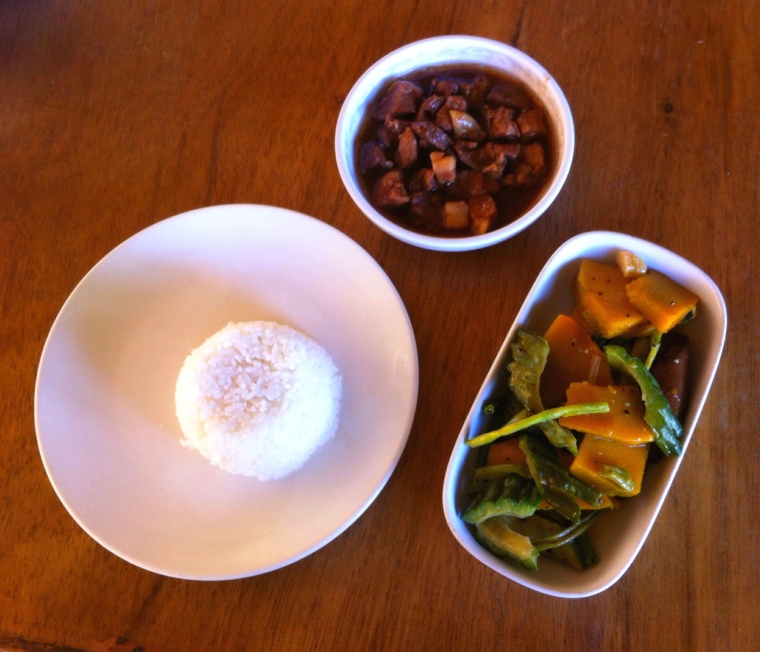
We got to El Nido at 12.45 pm and the driver had to wake a sleepy me up! ‘Wow’, I thought, ‘so quickly?’ No, that was the right time to reach there. Local transport was no longer a problem by now and I knew how to approach a tricycle fellow and felt largely at home while climbing on to it and seating myself. Tricycles are more common than taxis in Palawan and their ride comes at a cheap price. A tricycle here is nothing but a common motorcycle fitted with a compartment where two to three people can sit. Checked into Austria’s Place (10 USD/night) and straightaway got into the scorching sun, because my time here is going to be very limited. As I walked along the street, I came across a very narrow alley and through it saw a swaying dhow on turquoise water. That glimpse was a great assurance of all the pictures of El Nido I had been savouring in the past few days. That was Bacuit Bay, where all the boats going to the lagoon trips are anchored at. The bay has some charming views of the limestone cliffs, and on its beachside, several restaurants provide lunch and dinner. I would come back here later in the evening for my dinner at Marber Resto and Bar. Dining here is a great experience, with the limestone cliffs, the anchored dhows, the torch poles and the people silhouetted against a crimson horizon at sunset. I paid 270 pesos (USD 6) for my seafood fried rice, deep-fried potatoes and the very Filipino beer called San Miguel.



Knowing that Austria’s Place is only a stone’s throw away from the bay, I decided to take a stroll along the winding streets. I was curious to watch people engaged in different activities in an open community hall. Some were playing badminton, being monitored by a coach who kept talking to them. On the other side were a group of hip and trendy-looking lovely young women doing catwalk rehearsal, directed by a gentleman who stood on one side. Was the next Miss Philippines there among them? I got into a souvenir shop and did some window-shopping to decide on the stuffs I had to buy. Time to go back to the hotel as the Tour A guys will knock at my door early morning.
At El Nido, they offer four different tours for the island-hopping – Tours A, B, C and D. I took A, which is all about lagoons and beaches. My group was comprised of 7 – a British couple, a Filipino couple settled in the US and two gentlemen from Spain and the lonely me! We cruised along at about 8.30 am and made our first stop at a small lagoon around Miniloc Island. Never had I seen such green and translucent waters, surrounded by giant limestone cliffs. The water is only about 2-3 metres deep and my group and several other groups started plunging into the water for snorkelling. Not my business for this time. I was there more for fact-collection and photography.


From the lagoons we sailed toward Shimizu Island which is usually a lunch isle. Several other groups had already started their luncheon and our crew started preparing it for us, too. Seafood, rice and tropical fruits decked the table. There was plenty for all of us and we took our own sweet time eating and then taking a walk around the cliffs.

After that was the secret lagoon the crew promised us. It was not just a secret lagoon, but also a secret beach with a secret cave-like structure beside it. You need to crawl a bit to get inside to reach this hollow cave. This place gives you a lot of scope for photography. The boat only stops at a few metres away from the sand, so you have to wade in to get in and out of the beach. The next two stops were at the big lagoon and the scenic 7 Commandos Beach. Apart from the resort at Miniloc Island, there are 3 small ones here at the 7 Commandos. This is a perfect place to stay to get lost and get cut away from all your stress. The ocean looks in its bluest and the cliffs in the background make up a beautiful art work on exhibition. The bikini-clad sunbathers complement the picture with their bodies spread out on the powdery, white sand. Time to go back to El Nido town.


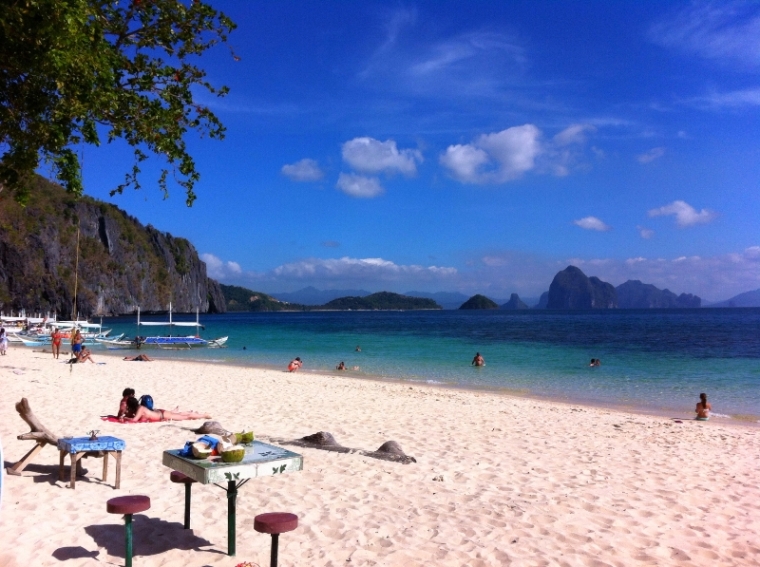
I need to visit the Las Cabanas (officially named Marimegmeg Beach) beach near the town before I catch my van back to PP. Las Cabanas beach is just 10-12 minutes tricycle ride from the town. The coconut palm-fringed beach is an ideal spot to watch the sunset. I spent two full hours at the Orange Pearl Resort’s café at the beach’s southern side. There are cosy rooms available at this beachfront resort. Lucelle’s Spa and Massage (popular in El Nido) is only a kilometer away from this resort. For a usual, soft Swedish massage they charge only 400 pesos (USD 8.8). Very good service and hospitality. They have another branch in the town, but it’s much better to get pampered in this environment.


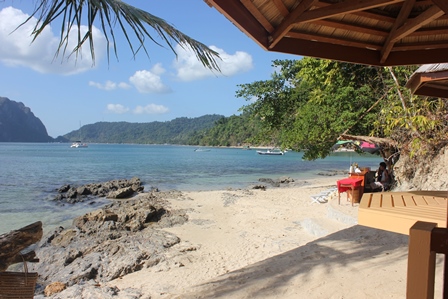
My van was ready at the terminal and I embarked on another 6-hour ride back to PP. I would reach Bayview Backpackers at 11.30 pm, hit the hay quickly and wake up again at 5.00 am before the next guy picks me up at 6.00 am for the underground river tour. The tour group’s timing was perfect again and in an hour we reached the Sabang port where we waited for our boat to the underground river. I was with a Canadian couple and a Pinoy family who were on vacation from Laguna in the central Philippines. The boat ride to the national park island, which is a UNESCO World Heritage site, took only 25 minutes. You have to walk through the national park to get to the river. It’s only a five-minute walk in the company of some naughty monkeys. We didn’t have to wait too long to get into our dhow and in we cruised into the pitch dark of the 8.2 km long river. Wait, we are only tourists and we can navigate only 4 kms. Beyond that, you need special permission, which is usually only given to scientists, researchers and TV production companies. But, trust me, 4 km is more than enough to experience its imposing stalactites and stalagmites which are assumed to be shaped like some mythical characters and ordinary men and women. The boat captain and tour guide was funny enough to entertain us with his occasional jokes on the shapes. Women in our group shyly laughed out when he pointed out two stalactites shaped like a naked man and a naked woman with the breasts the penis jutting out. We passed by other groups who were also flashing the lights to reveal the mighty structures. For a moment we switched off the flashlight and there was total darkness! A darkness you would only see in films.


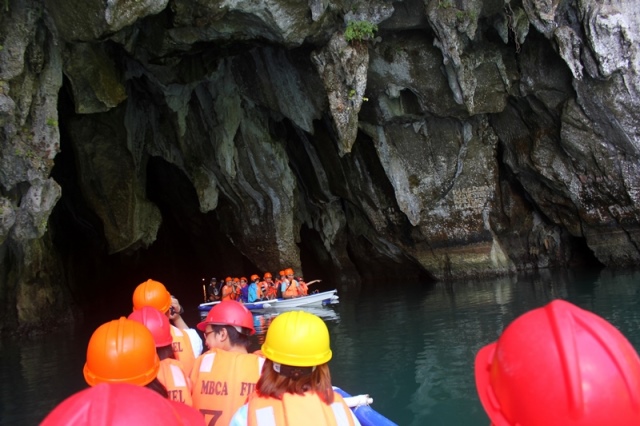

We got back out of the cave in 25 minutes and headed to the Sabang port where Gusto Grill Bar and Resto would serve us lunch.
The Filipino food, like its variety, would charm you, entice you, tantalise you and can even shock you at times! Being an archipelago, it is quite usual for a first time tourist to expect a menu filled with seafood items. And yes, your expectations will soon turn into experiences in the restaurants and on the streets of Palawan. However, there are dishes that Palawan serves you more uniquely compared to the other provinces. Tamilok is one of them. It’s fresh woodworm or mollusk!
It was my last day on Palawan. I decided to try one or two of the hall-of-fame member dishes of Palawan. Number one is undoubtedly Tamilok. The waitress at Ugong Rock restaurant in Puerto Princesa accommodated my request and a brought a bowl of fresh woodworms, slimy, pure-whitish and very juicy. ‘Tastes like oyster’, she informed me, watching my curious eyes. She probably saw my heart in my eyes. I quickly, but apologetically indicated to her that I would settle for a crocowali, deep-fried croc meat sliced into small pieces with sauce. Later, I watched the waitress and her friend having a mischievous talk and smile at me from near the kitchen. I guessed what they were gossiping. Crocowali wasn’t bad, well prepared and dipped in the sauce, it tasted really good.
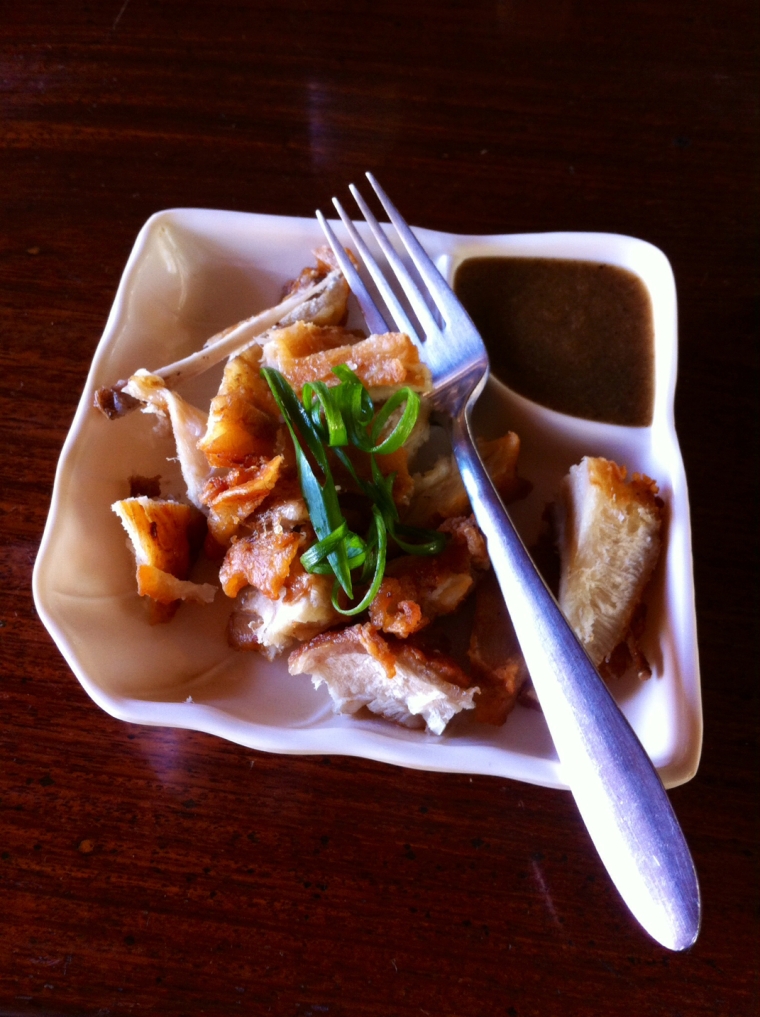
And while in Palawan, I read about a legend behind the name, Tamilok. It goes like this: two American tourists once spotted a tribe in Palawan eating the woodworms and one of them yelled to the other, ‘Tommy, look’. The tribals misinterpreted this and thought the tourists were mentioning the food. Subsequently they started calling it ‘Tamilok’. I am not sure how far this is true, but it definitely sounds interesting.
Salalah, Oman – A Flashback
Those were the early days of travel in a foreign country. I had already settled down in Sohar, north Oman in 2001 and started to adapt to life under the Arab sun. Those were the early days of photography, the analogue version. I had just bought a Minolta from Dubai and was taking every opportunity to click, be at a nearby beach at the Sohar Corniche or at my backyard from where I could watch an Omani’s domestic camel in the neighbourhood.
That’s when Salalah beckoned, in 2003. People were saying a lot of things about the place. That the geographical features are different from the ones you usually see in the Middle East. That the greenery here is a standout and it resembles my hometown, Kerala in India. That it is 12-14 hours’ drive from Sohar. Yes, the journey was like drawing a long curved line in the map of Oman from north to south (flights to Salalah from Oman’s capital, Muscat were not that popular those days). There’s absolutely plenty to see on your left and right on the way to this green oasis in the desert.
The first stop was a curious point called the ‘Anti-Gravity Point’ at Tawi Atair near Mirbat. Scientifically not an anti-gravity point, this magnetic hill has the ability to pull cars up at neutral. I was with a group in a bus and the bus was not one of the hill’s obedient disciples. So we got down, admired the views, gawked at the top of the hill and the surroundings. One or two cars enjoyed the trick at neutral, we watched them. Being dry season the greenery wasn’t green this time. But green was probably hiding in the dark complexion of leaves in the trees.

Somehow I didn’t regret the fact that it was not rainy season. So I didn’t miss the lush green. Being only in my second year abroad, the local scenes back home did not produce the exotics I was looking for. I loved the arid look around. The barrenness among the plants and the few tall trees raising their umbrella heads here and there. The winding, sandy road leading uphill emanated more heat, but I seemed to love it. The oval-shaped rock pieces and gravels were to me a big source of attraction as they were not the same back in Kerala. I watched the winding road and the turn where my vision of it ended and our bus, which seemed to stand helpless against an unconquerable height. I was in a foreign country.
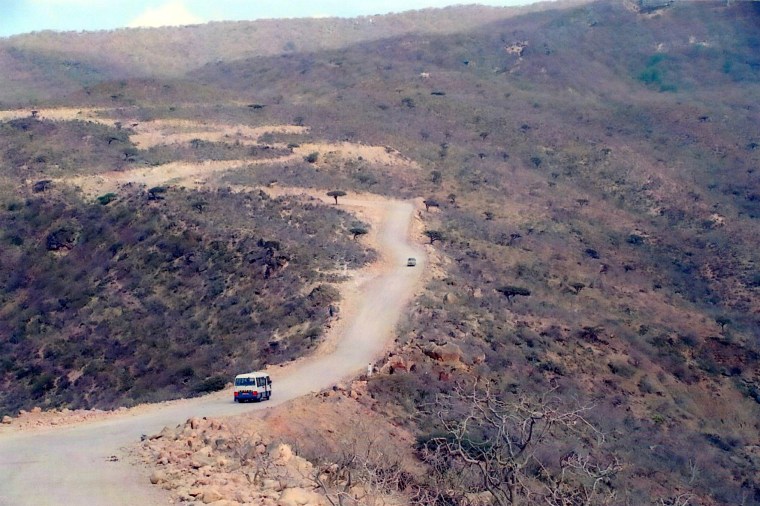
Towards afternoon the bus left for Ain Razat, just about half an hour’s drive from the town of Salalah. Ain Razat is a popular picnic spot that has a cave, spring water and a garden. An initial impression of the place as soon as I got out of the vehicle was that of a prehistoric site than of a picnic spot. Again, I loved the place. I was not there for picnic. The hollowness on the bosom of the hill (technically a cave) was a mysterious attraction from a distance. I climbed the steps leading to the hollow mystery only to find out that the cave ended within two metres into the orifice. I checked the wall of the cave, pretending to be an archaeologist, propelled by my newfound love for travel.

Then I looked back at the picnic spot, mostly sandy earth and some withered-looking trees, still retaining some greenery, standing as vanguards of history rather than providing shades for picnickers. I admired the roof edge of the cave which framed the picnic spot with the mountains in the background. My Minolta made some noise with an eager shutter speed. Looking at some of the recent pictures of the Razat cave I can see some changes in the place. The leading steps have a bannister beside them and the garden looks more garden than it was thirteen years ago. I was lucky I could see Ain Razat without the touch of progress or the intervention of modern embellishment.

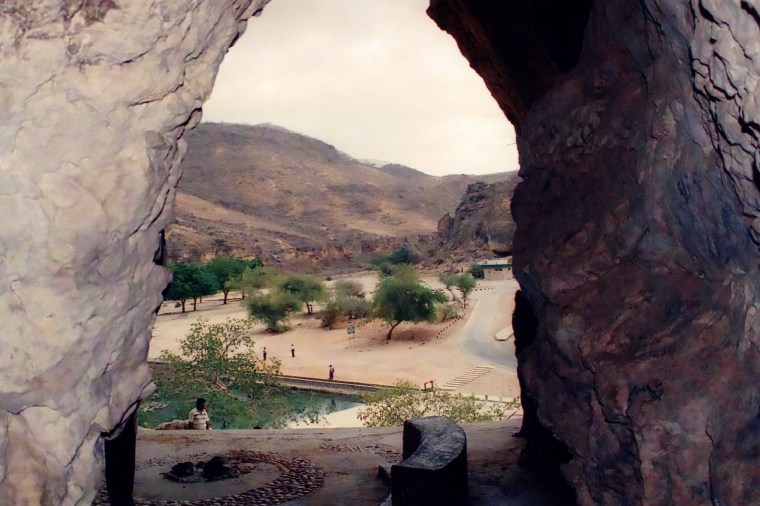
Evening was drawing closer and as the bus took different turns here and there the landscape started changing its countenance. We were driving along a desert, yet not too far from the city. As we drove along, the blue of the ocean rose from nowhere and we were told that we were nearing one of the most popular beaches in Salalah – Mughsayl Beach. Half-naked bodies lying flat on the sand, colourful umbrellas and beach chairs arrayed beside them, surfers competing with rising waves, jet skis living up to their oft-given nickname of wave breakers. Weren’t you expecting these after ‘most popular beaches’? Mughsayl beach had no one on it until we ruined its stoic silence. On one side is the desert and the ocean on the other. This was the sight I wanted. The vast spread of the beach that runs along for eight kilometres, an unobstructed view of the endless path of the sandy beach, sandwiched by the yellowness of the desert and the blue ocean.
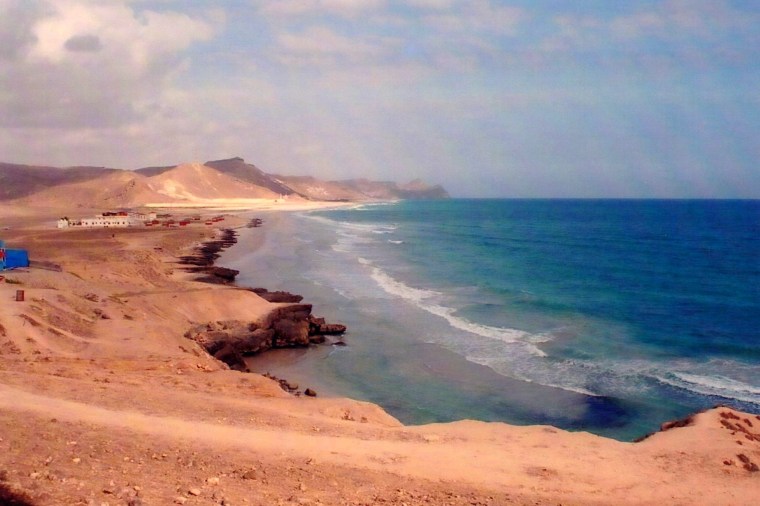
I looked toward the west. Here the ocean cradled ghostly mountains whose positions were structured in a way that resembled the rising and the falling of the waves. The sun was about to set and the darker it got, the more charming the mountains looked and ghostlier. The waves started looking more hostile and the day was fast coming to an end.


We were informed about a blowhole here that sometimes erupted and blew water for 100 metres when triggered by strong currents. Not today.
Link to my article on Flyme360 Magazine
It’s all about Kota Kinabalu, Malaysia.To read, subscribe FREE to 12 issues of Flyme360. The article is on page 23 of January 2016 issue. Flyme360 is a growing magazine with some excellent content and high quality pictures that can match the best in travel writing. This is a great opportunity to get not just one but TWELVE issues (digital) free. Here’s the link to subscribe.
http://www.flyme360.com/#_Introduction
Take a look at my foodie article here: Street Food Around South-East Asia
Tasting street food has many objectives. It’s not just about filling your stomach, satiating your appetite and savouring tasty delicacies. As a traveller, you get into the crowds, mingle with locals and try your best to use the catchphrases you may have learnt before your departure.
Read the rest of the article on Travel Now – http://www.travelnowmag.net/street-food-southeast-asia
48 Hours in Jakarta on Amazon
My ’48 Hours in Jakarta’ (Indonesia) guidebook, produced by Euromentravel, is now available on Amazon. Check out how this glamorous city can entertain you during your sojourn or stopover there. Here is the link –
Pangandaran – Indonesia’s Lesser-known Beach
Check out my latest article on InseAsia Travel Website
http://www.inseasia.com/2015/07/pangandaran-indonesias-lesser-known-beach/
BLOGS
A view of the ocean from the beach pool villa in Alila Villas Soori, Bali.
The Village Road to Luxury
As the car turns left from some joint on the main road in the Tabanan Regency of Bali, we get a feeling of entering a best-kept secret land which is actually not that far away. A Balinese village atmosphere beams right in front of us. The temporary stupas (temple towers) in front of the temples stand tall and elongated made of thatch leaves. Entrance gates to houses have a divinity attached to them, modelled after the structure of Balinese Hindu temples. A couple of convenience stores are juxtaposed between temples and houses. The road lies ahead, so empty barring a vendor woman who carries a basketful of food on her balancing head and a tiny boy on his tricycle precariously riding on the asphalt.
We have crossed a few kilometres and the left and the right sides open up. No more houses and no more temples. Lush paddy fields, randomly cultivated banana trees here and there and some lined up coconut trees on the alleys between the fields become our stock scenery for the next fifteen to twenty minutes. It’s around 9 am in the morning and the strengthening sunlight spreads its gleam on the green fields so fluently that we can even monitor the tiny birds looting the humans’ hard-earned crop. Not far away from the birds the ladies in the fields do not mind the looters’ daylight ravaging. We only see the ladies’ conical shaped hats clearly as they lean down, busy collecting the crops.
Our destination is the acres-long property of Alila Villas Soori which lies on the verge of the Indian Ocean and at the end of this calm and peaceful village. But what we are passing by at the moment makes us skeptical and we feel like gullible little children. More sights of paddy fields and lonesome arecanut trees force a question out of us: are we being taken for a ride? The driver holds the steering wheel very professionally; he might have been here a hundred times. But much to our surprise, he brakes, at a Frostian diverging of two roads. Without disturbing us he takes out his mobile phone and makes a call, probably to our villa. Speaking in a very soft voice he makes sure that he got his vista right.
We resume our journey, along the fields and the trees. The distant farmers, specks on the green fields, have probably started accumulating beads of sweat on their bodies. We had not in our mind one of those off-the-beaten-path expeditions where travellers usually hope to get lost and fumble into serendipitous moments. All we had been waiting for was to dip into the private pool, laze in the heavenly bedroom and spread our wearied bodies in the bubble-floating bath-tub of our million-dollar valued villa. Then, to realise the walking on the black sand beach which we had been savouring from the glossy pictures on the brochure.
The car takes several turns in quick succession and every turn gives a slideshow of the same sights we have been passing by. We are tempted to ask the driver.
“Do we need to ask some locals here?”
“No need. It’s another few kilometres”, he assures us without turning back.
We reach a cul-de-sac with a wall in front jutting out into the street. We see the name Alila written in the same font as on their website. Our skepticism gives way to impatience. We cannot wait to check in and be three-day residents in a regal villa.
Once inside Alila’s courtyard, we forget the way we took. The sarong-clad ladies escort us to our beach-pool villa. On our walk, we pass by a garden, an infinity pool and a soothing view of the ocean in the background. This is the very place we wanted to be in to get cut away from files, deadlines and desks. We jump into our private pool and the touch of the water affects our feelings salubriously. The jasmine flowers from the adjacent plants keep falling on the pool intermittently. They deck the water’s edges and float in the ripples from our gliding movements.
We feel being on a vantage point from where we could charm ourselves with the endless sight of the ocean on one side and the green fields and the mountains on the other. Each morning, we take a stroll, either among the fields or on the black sand beach which leads to a temple on a clifftop. The calmness felt is a gift that you cannot buy anywhere near you. The villas, how soothing they are! They are luxurious, yet do not try to entice people by boasting of glitters that is associated with sheer luxury.
At the barbecues on the evenings, we savour the best of steaks, ogling the deep red horizon that is ours.
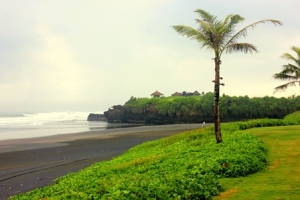


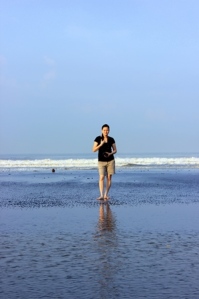
END
3 Outdoor Adventures To Do In Bandung, Indonesia
Bandung, a 2-3 hour drive from the Indonesian capital of Jakarta, is a beautiful, hilly destination which offers a mélange of activities for different kinds of travellers. From food districts for the gourmets to fashion stores for the shopaholics and breathtaking terrains for the adventure aficionados, it holds nearly everything up its sleeve to woo the visitors. During my latest tour, I focused on the light to moderate adventure side of this wonderful place which is often referred to as the ‘Paris of Java’.
1. Off-road Driving in Lembang
Book your room at Lembang Asri Resort, an hour’s drive from Bandung town and arrange a Land Rover ride (www.lembangasrihotel.co.id) along the muddy, zig-zaggy country roads. The veteran-looking Land Rovers pick you up at your hotel early morning and their highly experienced drivers ensure a thrill-filled, 40-60 minute action before you get back to the main road. On the way, you pass by tea and rubber plantations and other some wild and exotic trees. The waterlogged areas might look a bit scary, but they only add to the excitement. Do not wear your best clothes.

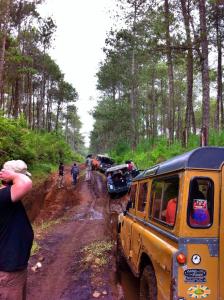
2. Paintball
If you are sportive and like to get involved in some team competition, head to the hilly jungles of either Lembang or Maribaya (both an hour’s drive from Bandung town) with http://www.paintballbandung.com . This requires at least 8-10 people to make even teams and get ready to lock horns at the battlefield. Airsoft guns and paint-filled bullets (harmless to the body) are used to shoot at each other while acting like snipers from behind trees and artificially created barriers. You are protected from top to toe with paintball gear.
3. Treetop
How about spending some challenging time at the arboreal heights? Hop from tree to tree, treading on hanging bamboo bridges, designed like railway tracks, finally do flying fox and land on a net safely. You are fastened to an overhead rope all the while. It might look a bit easy, but certainly requires some patience and stamina. You could finish in 40-60 minutes depending on how quick/slow your movements are. Book it with http://www.bandungtreetop.com.
END
48 Hours in Singapore – Backpacker’s Budget Weekend
My first taxi ride in this tiny, beautiful state occasioned an accentual misadventure. Though I had Singaporean colleagues back in Indonesia, this was the first time I could, in all its crude authenticity, experience what they disparagingly call, Singlish. The taxi driver, an elderly man, probably in his sixties, lectured me on many things which I reckoned as about Singapore’s political relationship with its neighbours including Indonesia. During the 30-minute ride to Geylang from Changi I remained a mute listener with often nodding my head in approval of the grandpa’s witticisms.
It’s weekend, but just Saturday and Sunday and I needed to make the most in 48 hours. My sojourn here coincided with the upcoming Hindu festival of Deepavali, festival of lights, celebrated by the ethnic Indians in Singapore. I decided to check it out as well as experience the cultural quadrangle that is Little India. Huge gate-like structures greeted me as I entered the town. The archaic buildings, the flower and the vegetable markets tell you that this is not Singapore, yet you are in Singapore. The sight of Sri Veerakaliamman Temple (the Hindu temple) at a junction gives you the feeling that you are in the state of Tamil Nadu in south India. I slowly found my way into a popular shopping joint called Mustafa Centre. This is often crowded as it offers anything A-Z. Probably the most affordable joint in Singapore. Just opposite Mustafa is an array of small restaurants sending out rich smells of Indian cuisine. I had paper masala dosa (extra long Indian style of pancake made of rice and stuffed with potato). After the meal, I turned right and sauntered along the shops selling kitsch items like bangles, beauty products, henna ingredients, all characteristic of traditional Indian sense of bridal beauty. Fresh flowers meant as offerings to the temple steal the limelight with their smell and hues. I came back to this area at night to witness the illumination that brightened the whole place. Lovely sights to wind up my evening.
Suggestions for vegetarian food: Komala Villas, Ananda Bhavan
Non-vegetarian: Khansama Tandoori restaurant (All situated in and around Serangoon Road, Little India)
After lunch I took a detour around Little India and entered Kampong Glam. This little joint of commerce and food is often overshadowed by Little India and Chinatown. What was once a fishing village is a beautiful and symmetrical row of streets with shops selling souvenirs, carpets, silk and needless to say Arabian food. The Malay-Arab stronghold was established here especially after the Sultan of Singapore signed a treaty with the East India Company in 1819. Bargaining works a lot in shops selling silk and carpets. Small souvenirs like key chains are available for less than a dollar. Compared to the prices in Little India and Chinatown you get a better deal here. As I walked along the vicinity of the Grand Mosque, passing by souvenir and silk shops, my eyes were quick to blink on an odd one out – Wayan Retreat Balinese Spa!
For more info on Kampong Glam: http://www.kampongglam.org.sg
Before heading to Chinatown, a red-coloured, fancy-designed bus (called ‘Hop-on, Hop-off topless bus’ by the company, Duck Tours) with rooftop sitting facility caught my eye at the Serangoon Road. This is one of the best ways to go around the city and have fun. Lacking time, (as I had not planned this prior to my arrival) I had to postpone this sightseeing by bus for my next trip. Apart from bus service, the Duck Tours company offers many other Singapore tours.
The sightseeing tour bus
For more info: http://www.ducktours.com.sg
On Sunday, I made my way to Chinatown where food was here, food was there. The narrow streets are a little congested as shopping and dining prospects are very high. The old buildings with red-coloured windows and the hanging red lanterns proclaim the very Chineseness of this part. Further into the street, I entered the Buddha Tooth Relic temple, a magnificent piece of architecture both in and out. There are particular timings for viewing the Tooth Relic. You may check it out on the temple’s official website. Just outside the temple another street beckons for more shopping and here I bought many of my souvenirs – traditional Chinese fans, key chains, T-shirts and pens. Plenty to look at and need good haggling skills.
Tips: Nearby the temple are some small food outlets with delicious noodles, Hainan chicken and duck rice and my favourite item, the curry puff.
The Buddha Tooth Relic Temple
For more info on the temple: http://www.btrts.org.sg
I had 4 hours left before leaving for Changi to catch my flight back to Indonesia. I left my hotel at Geylang at about 2 pm and took a taxi to Marina Bay Sands. Sounds luxurious in a budget trip? Not really, unless you plan to stay there overnight and take a dip in the ‘sky swimming pool’. You can get to the top of the MBS by paying S$20. There are at least two restaurants and a small café which are separated from the swimming pool on the other side. I had croissant from the café before loitering on the edges of the dhow-shaped roof. The stunning view of Singapore from here offers a lot to photographers. I took my own time clicking different angles before going down to The Shoppes of MBS downstairs. The Shoppes has outlets selling branded goods and multi-cuisine restaurants and there is an ice rink for children. The Art and Science Museum is just next to The Shoppes. The veranda in front of the museum is used by people to sit down and relax and chat. While sitting there I observed health-conscious athletes jogging under the hot afternoon sun. I needed to start now.
Inside the Shoppes, Marina Bay Sands
An aerial view from the viewing deck of MBS
END
Gourmet in Palawan
The Filipino food, like its variety, would charm you, entice you, tantalise you and can even shock you at times! Being an archipelago, it is quite usual for a first time tourist to expect a menu filled with seafood items. And yes, your expectations will soon turn into experiences in the restaurants and on the streets of Palawan. However, there are dishes that Palawan serves you more uniquely compared to the other provinces. Tamilok is one of them. It’s fresh woodworm or mollusk! I will tell you more about it in the next few paragraphs.
My first foodventure started on the second day, on the way to El Nido from Puerto Princesa, on a six-hour journey. We stopped by at a restaurant, aptly named ‘Halfway’ (between PP and El Nido), where I ordered rice, pork adobo and pakbet. Adobo is basically meat marinated in soy sauce, vinegar and garlic. Added with potatoes, it gets very tasty. Pakbet is mixed vegetables steamed in fish or shrimp sauce. Two side dishes to go with steamed rice. While my fellow passengers looked on, I had my first Filipino feast. Yummy ones to begin with. 150 pesos.

For dinner at the scenic Bacuit Bay in El Nido, I decided to settle down for a more characteristic south-east Asian menu at Marber Resto and Bar. Seafood fried rice and deep-fried potatoes and a bottle of San Miguel pilsner. This dinner was more about enjoying the salubrious air around the beach at dusk than appreciating the taste felt by the palate. With torches lit beside every table and the silhouettes of the limestone cliffs and the anchored dhows acting as drawings on the canvas of the fading horizon, this makes for a truly budget romantic spot. Doesn’t mean to say that the food was of mediocre quality. It was very much worth for 270 pesos.
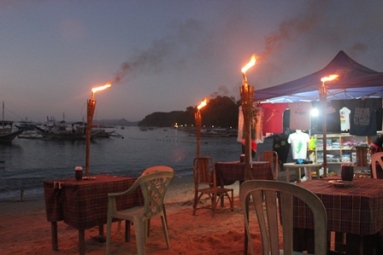

Day 3 lunch was a big feast. Imagine sitting on an island beach and being treated with a host of seafood smorgasbord filling the table from corner to corner. It’s like remembering Omar Khayyam’s lines ‘Here with a loaf of bread, a glass of wine and thou beside me, wilderness is paradise enow’. That was what I felt on the Simizu Island where we halted during our island-hopping trip. The lunch was part of the day-trip package (1400 pesos). Apart from fish, squid, shrimps, chicken and mussels, we had eggplant and salad to accompany rice. Our versatile boatman and the tour guide prepared all this for us.
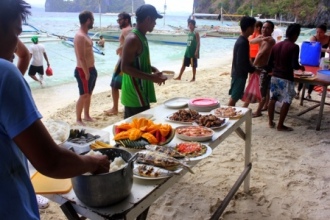
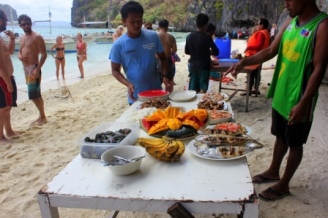
Day 4 was the Underground River tour, a half-day programme for which we boarded a boat from the Sabang port and returned to the same spot in the afternoon for lunch. Gusto Grill Bar and Resto didn’t disappoint me with its sumptuous buffet though the place was packed with tourists and I had to patiently wait in the queue for my food. We as a group occupied a table where I had pork menudo, fish lumpia and salad along with rice. Yummy again and what a fantastic atmosphere from tourists from different parts of Philippines and the world. This lunch is included in the Underground River tour package (1400 pesos).
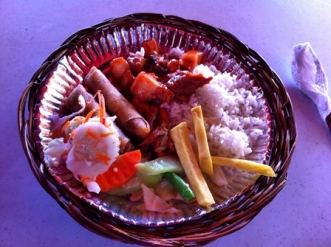
The most happening place in the evenings at PP is the Baywalk as my tourist guide pointed out. There is a long and charming esplanade here, overlooking the South China Sea. The street lamps are lit by six pm and you could watch local families with children either strolling or taking a tricycle (pedalled ones) ride. Next to the esplanade are cafes lined up all along. Seafood, meat, chicken and snacks galore at this hot dining place. The chefs work in front of you, often shrouded in smoke coming from the grills. That sight coupled with the display of fresh fish and shrimps doubles your appetite within seconds. I settled down for a bowl of rice and fried fish with some vegetables (200 pesos).

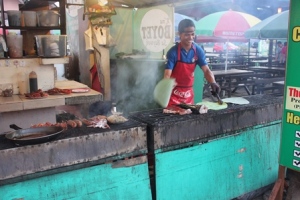

I took a walk along Rizal Avenue, not satisfied with what I have done so far this evening. This is where I came across the Spanish-influenced lechon (roasted pig) which was being sold by a solitary vendor. I took a few quick bites before making my way back to the hotel. Good taste and better eaten with rice and other side dishes. No wonder people buy it and take it away.
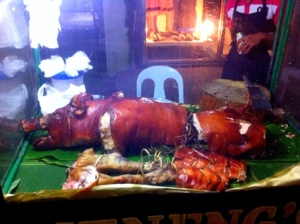
It was my last day on Palawan. I decided to check out some of the fine dining places in PP. Reviews and locals recommended Kinabuchs, Ugong Rock and a few other names which are usually crowded. Kinabuchs, the most popular of all of them, wasn’t open for lunch. The security guard there informed me that they open only for dinner in the evening. Their neighbour, Ugong Rock (didn’t seem to be as popular as Kinabuchs) was open and I decided to try one or two of the hall-of-fame member dishes of Palawan. Number one is Tamilok. The waitress accommodated my request and a brought a bowl of fresh woodworms, slimy, pure-whitish and very juicy. ‘Tastes like oyster’, she informed me, watching my curious eyes. She probably saw my heart in my eyes. I quickly , but apologetically indicated to her that I would settle for a crocowali, deep-fried croc meat sliced into small pieces with sauce. Later, I watched the waitress and her friend having a mischievous talk and smile at me from near the kitchen. I guessed what they were gossiping. Crocowali wasn’t bad, well prepared and dipped in the sauce, it tasted really good.
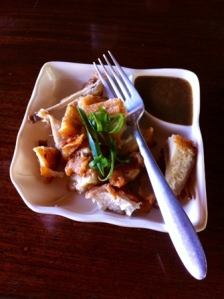
And while in Palawan, I read about a legend behind the name Tamilok. It goes like this: two American tourists once spotted some tribals in Palawan eating the woodworms and one of them yelled to the other, ‘Tommy, look’. The tribals misinterpreted this and thought the tourists were mentioning the food. Subsequently they started calling it ‘Tamilok’. I am not sure how far this is true, but it definitely sounds interesting.
Palawan – A Slender Paradise with a Sweet Bounty
When the airline agent at Kuala Lumpur announced ‘we regret to inform you……….. and now the rescheduled time will be ……, my heart sank. The last minute delay will inevitably upset all my plans. I could miss my flight to Palawan from Manila. Which means hotel hunting in the capital city and taking the next available flight which is only the next morning. My arranged trips will have to be pushed and within the hectic schedule, I will have to miss at least one part of it. I pondered: should I cancel the underground river tour, or skip one beach at El Nido? Either of these is a spoiler, I will regret it to the core. That word ‘regret’ is a rascal. There was tightening of the muscles, gnawing of teeth while waiting for the delayed flight and even when I finally boarded it, my tension continued. After about 2 hours into the flight, the captain announced the arrival time in Manila: 5.30 pm. My flight to Puerta Princesa was at 5.40 pm. No way could I make it. Lets go to Makati City? I might probably do that, half-heartedly. The plane landed at Ninoy Aquino International Airport at 5.30 pm. By the time we got out of it and lined up at the immigration queue, it was exactly 5.40 pm, much to my chagrin, as though it was all planned by an envious neighbour who was still among his files in his office. Immigration cleared, I rushed to the departure area where I sheepishly asked a red-clad Air Asia lady as though I were begging to her: ‘Look, I need to board this flight’, showing my web-checked in boarding pass. ‘Has the flight already left?’ The lady checked the flight number and replied: ‘No, sir, all our flights are delayed. You may proceed to the pre-departure area’. Should I now tell you anything about the amount of satisfaction that greeted me at Terminal 4 of NAIA? The information screen reconfirmed the delay.
I landed at PP (Puerto Princesa) at about 8.10 pm and quickly got into a tricycle which took me to Bayview Backpackers hotel in 15 minutes for 60 pesos (USD 1.3, 1 USD = approximately 44.38 pesos). 3 flights done in a day (Jakarta-KL-Manila-PP), I was tired beyond words, with the added tension. I just showed my voucher to the guy at the reception and asked him to get me to my room. Lay flat on bed and sleep shrouded me soon. The Bayview Backpackers is an old bungalow converted to a travellers’ inn. Rooms have wooden walls and are quite old. Some doors have very loose latches and there are very narrow slits in the walls which might give you partial views of your neighbouring rooms. The shared bathrooms are quite small, but 24-hour hot water is what I liked about it. There was wifi, but it hardly worked, so my decision to purchase a Smart prepaid card at NAIA was a very wise move (540 pesos). The whole place of BB was clean with seating arrangement at the garden outside. No big complaints as that’s what you get for 7 USD/per night.
The jetlag had hardly left early in the morning, but I had to get ready for my 6-hour road trip to El Nido. Go Discover (website at the bottom) guys looked professional enough to come and pick me up at the appointed time of 6.45 am. Barring me, there were two Filipino families, also travelling to El Nido. They were from Manila and like me, were first timers to Palawan. At our one and only break at a roadside restaurant, I chose to have some Filipino dishes for my brunch. Rice with pork adobo and pakbet (a veggie preparation). Good food and wasn’t pricey at 150 pesos.
We got to El Nido at 12.45 pm and the driver had to wake a sleepy me up! ‘Wow’, I thought, ‘so quickly?’ No, that was the right time to reach there. Local transport was no longer a problem by now and I knew how to approach a tricycle fellow and felt largely at home while climbing on to it and seating myself. Tricycles are more common than taxis in Palawan and their ride comes at a cheap price. A tricycle here is nothing but a common motorcycle fitted with a compartment where two to three people can sit. Checked into Austria’s Place (10 USD/night) and straightaway got into the scorching sun, because my time here is going to be very limited. As I walked along the street, I came across a very narrow alley and through it saw a swaying dhow on turquoise water. That glimpse was a great assurance of all the pictures of El Nido I had been gawking at in the past few days. That was Bacuit Bay, where all the boats going to the lagoon trips are anchored at. The bay has some charming views of the limestone cliffs, and on its beachside, several restaurants provide lunch and dinner. I would come back here later in the evening for my dinner at Marber Resto and Bar. Dining here is a great experience, with the limestone cliffs, the anchored dhows, the torch poles and the people silhouetted against a crimson horizon at sunset. I paid 270 pesos for my seafood fried rice, deep-fried potatoes and the very Filipino beer called San Miguel.

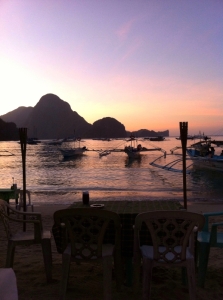
Knowing that Austria’s Place is only a stone’s throw away from the bay, I decided to take a stroll along the winding streets. I was curious to watch people engaged in different activities in an open community hall. Some were playing badminton, being monitored by a coach who kept talking to them. On the other side were a group of hip and trendy-looking lovely young women doing catwalk rehearsal, directed by a gentleman who stood on one side. Was there the next Miss Philippines among them? I got into a souvenir shop and did some window-shopping to decide on the stuffs I had to buy. Time to go back to the hotel as the Tour A guys will knock at my door early morning.
At El Nido, they offer four different tours for the island-hopping – Tours A, B, C and D. I took A, which is all about lagoons and beaches. My group was comprised of 7 – a British couple, a Filipino couple settled in the US and two gentlemen from Spain and the lonely me! We cruised along at about 8.30 am and made our first stop at a small lagoon around Miniloc Island. Never had I seen such green and translucent waters, surrounded by giant limestone cliffs. The water is only about 2-3 metres deep and my group and several other groups started jumping into the water for snorkelling. Not my business for this time. I was there more for fact-collection and photography. The British couple requested me to take care of their stuffs. By this time the crew had learnt that I am a freelance writer and they started giving me info without me asking for it. Jolly guys. From the lagoons we sailed toward Shimizu Island which is usually a lunch isle. Several other groups had already started their luncheon and our crew started preparing it for us, too. Seafood, rice and tropical fruits decked the table. There was plenty for all of us and we took our own sweet time eating and then taking a walk around the cliffs. Now was the secret lagoon the crew promised us. It was not just a secret lagoon, but also a secret beach with a secret cave-like structure beside it. You need to crawl a bit to get inside to reach this hollow cave. This place gives you a lot of scope for photography. The boat only stops at a few metres away from the sand, so you have to wade in to get in and out of the beach. The next two stops were at the big lagoon and the scenic 7 Commandos Beach. Apart from the resort at Miniloc Island, there are 3 small ones here at the 7 Commandos. This is a perfect place to stay to get lost and get cut away from all your stress. The ocean looks in its bluest and the cliffs in the background make up a beautiful art work on exhibition. The bikini-clad sunbathers complement the picture with their bodies spread out on the powdery, white sand. Time to go back to El Nido town.
I need to visit the Las Cabanas (officially named Marimegmeg) beach near the town before I catch my van back to PP. Las Cabanas beach is just 10-12 minutes tricycle ride from the town. The coconut palm-fringed beach is an ideal spot to watch the sunset. I spent two full hours at the Orange Pearl Resort’s café at the beach’s southern side. There are cosy rooms available at this beachfront resort. Lucelle’s Spa and Massage (popular in El Nido) is only a kilometer away from this resort. For a usual, soft Swedish massage they charge only 400 pesos. Very good service and hospitality. They have another branch in the town, but it’s much better to get pampered at this environment.
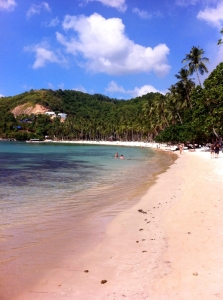
My van is ready at the terminal and I embark on another 6-hour ride back to PP. I would reach Bayview Backpackers at 11.30 pm, hit the hay quickly and wake up again at 5.00 am before the next guy picks me up at 6.00 am for the underground river tour. The tour group’s timing was perfect again and in an hour we reached the Sabang port where we waited for our boat to the underground river. I was with a Canadian couple and a Pinoy family who were on vacation from Laguna in the central Philippines. The boat ride to the national park island, which is a UNESCO World Heritage site, took only 25 minutes. You have to walk through the national park to get to the river. It’s only a five-minute walk in the company of some naughty monkeys. We didn’t have to wait too long to get into our dhow and in we cruised into the pitch dark of the 8.2 km long river. Wait, we are only tourists and we can navigate only 4 kms. Beyond that, you need special permission, which is usually only given to scientists, researchers and TV production companies. But, trust me, 4 km is more than enough to experience its imposing stalactites and stalagmites which are assumed to be shaped like some mythical characters and ordinary men and women. The boat captain and tour guide was funny enough to entertain us with his occasional jokes on the shapes. Women in our group shyly laughed out when he pointed out two stalactites shaped like a naked man and a naked woman with the breasts and the phallus pointed toward different directions. We passed by other groups who were also flashing the lights to reveal the mighty structures. For a moment we switched off the flashlight and there was total darkness! A darkness you would only see in films.

We got back out of the cave in 25 minutes and headed to the Sabang port where Gusto Grill Bar and Resto would serve us lunch.
All photos taken with iPhone 4. I will post highres pics soon.
I will write individual blogs for the following on a later date:
1. Food
2. El Nido Experience
Useful websites:
http://www.gopalawan.travel
http://www.itsmorefuninthephilippines.com
El Nido – Chat on the Beach
It’s not that often you get off-the-blabbered topics coming your way while enjoying your holiday on a beach or on a countryside. Many of us love the idea of striking up a conversation with the locals of a country we are travelling in. I would like this to come spontaneously, without artificially dropping some pre-prepared introductory words and enabling a chat. Like many of you, I have indeed been successful some times, like an inevitable conversation with a seatmate in an overcrowded bus in Indonesia, a long time chat with a boatman on a secluded spot in Cambodia and a rare political chit-chat with an Omani driver while seated next to him.
However, the extraordinary ‘discussion’ that I recently had with a small group of Filipina bartenders beats all the previous encounters with its educational values. No, don’t think I’m going to take you to a classroom with neatly arranged tables and the white board and the projector all set. Rather, this stumbled-upon, impromptu conversation on destiny takes us to certain interesting viewpoints and hilarious underplaying of a sublime theme.
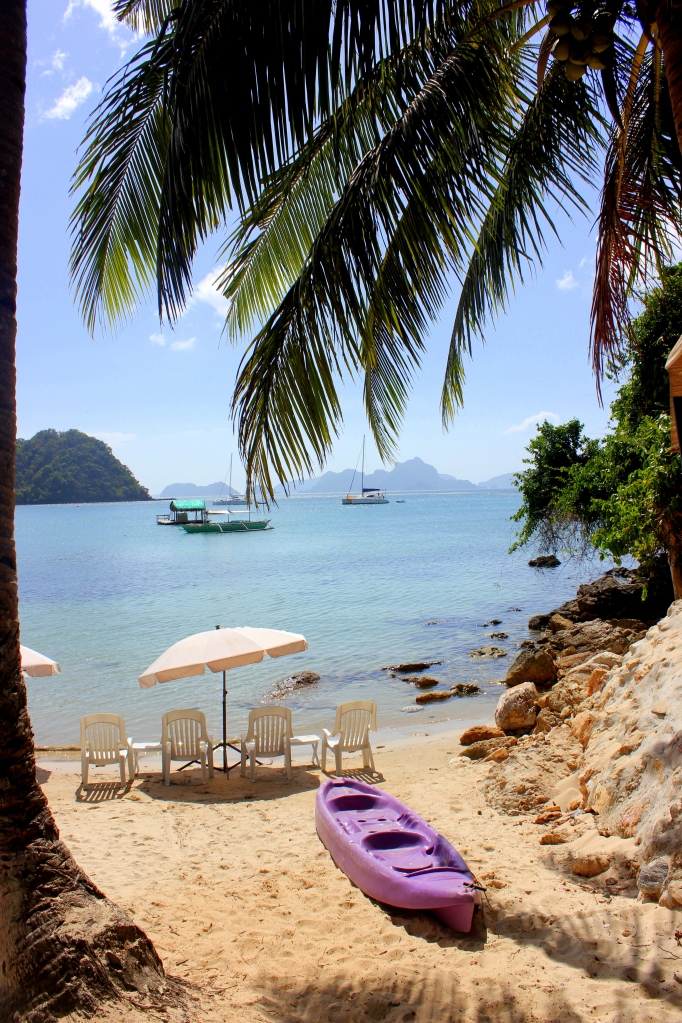
So there I was, under a hut, overlooking the turquoise water off the Marimegmeg (popularly called Las Cabanas) beach in El Nido on the north Palawan in the Philippines. It was quite hot in the afternoon, but the inviting water did pull some toward its wetness. The coves, the anchored ferries, the stately coconut trees in their hundreds and the bikini babes all made it a typical tropical beach scene. I just ordered a club sandwich and a bottle of soda and started ogling at the different objects at this fantastic location.
While waiting, some cackling, giggling noises made their way out from the bartender’s counter. One of the three girls on duty walked out with a super-smiling face, carrying my Manhattan-shaped club sandwich, while merrily replying to one of her mates’ questions (or points). When she reached me she shot this out-of-the-blue question few customers would be prepared for: ‘Sir, do you believe in destiny?’ Now, being a solo traveller at a very less crowded destination, I wouldn’t mind a question on destiny, would I, or would you?

But the challenge was to provide a good answer, honest, yet not too serious. Not too serious because after hearing their background noises I felt sportively obliged to keep the conversation in the same spirit so that I wouldn’t break its pace. I simply said yes and after a very minute pause, added that we are all made for that.
It wasn’t going to be the end of it. The sub-question followed quite quickly as a mandate.
‘Why?’
‘Well, I think our circumstances lead toward some pre-determined places and situations that we can’t escape’, my academic background couldn’t hide itself. I even added, ‘Our determination seldom helps, most often it is toppled by external influences’.
To which I only got a nonchalant, but understanding ‘oh okay’.
In this process, another girl came out and seemed to blurt out something: ‘Sir, she wants to know her destiny, haha’.
‘Oh were I a palmist or a tarot reader, we could have some fun time.’
The first girl quipped: ‘Oh so you know about palmistry? She knows it’, pointing to the third girl who was still inside the shack, preparing some drinks. The first girl managed to bring her out and read my palm. At the sight of my palm she got a little confused and opined that the lines on it were too many and very convoluted. Yes, she was right. She spoke of a disturbed mind and one who thinks about too many things in life while quizzically looking at my face. She seemed to be more serious than the other two girls who were still giggling and about to find a breakthrough to another topic.
So, what now? Yes, I was impressed by her reading as she was echoing some others who told me the same thing, be it in India, in Indonesia or here in the Philippines. It didn’t mean that I took the readings that seriously.
I asked the first girl to have her palm read by the ‘palmist’ bartender.
‘No need, po (sir). I’ve been reading it myself, haha. I can even see scenes in the lines.’
‘She can see her jing-jing in the lines, hahahaha’, the second girl cracked a typical bartender joke, having a dig at her mate.
‘Shut up, you with your jing-jing’.
‘What’s jing-jing?’, my curiosity intervened.
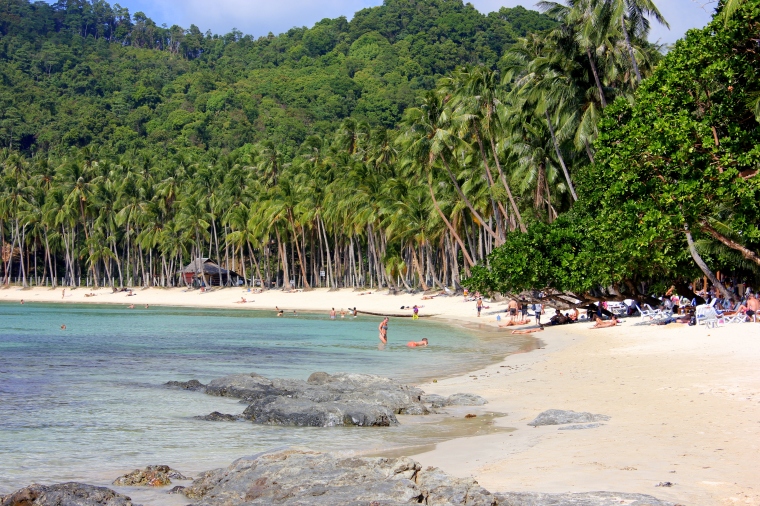
At this stage the giggling between the first and the second girls continued for some time. It was a giggling pause and it grew a bit wild with both of them cracking some jokes in the local Palawan dialect. The ‘palmist’ sensed my helplessness and assured me it’s just a joke. She told me they were just having fun and there’s no such thing as jing-jing.
But for me jing-jing brought out a déjà vu. Some years ago, a Filipina colleague back in Indonesia had probably referred to this less-known slang as part of regionalism talks. Somehow I forgot its meaning. I made a quick contextual assumption. Jing-jing was one’s dream sweetheart.
I decided to join the fun, cutting a crevasse into the giggling spree.
‘So, is a jing-jing in your destiny?’
‘You are her jing-jing’, the second girl couldn’t stop the giggling.
‘Shut up….’, the first girl didn’t quite enjoy it. She got more dutiful, passing a smile at me and getting into the shack.
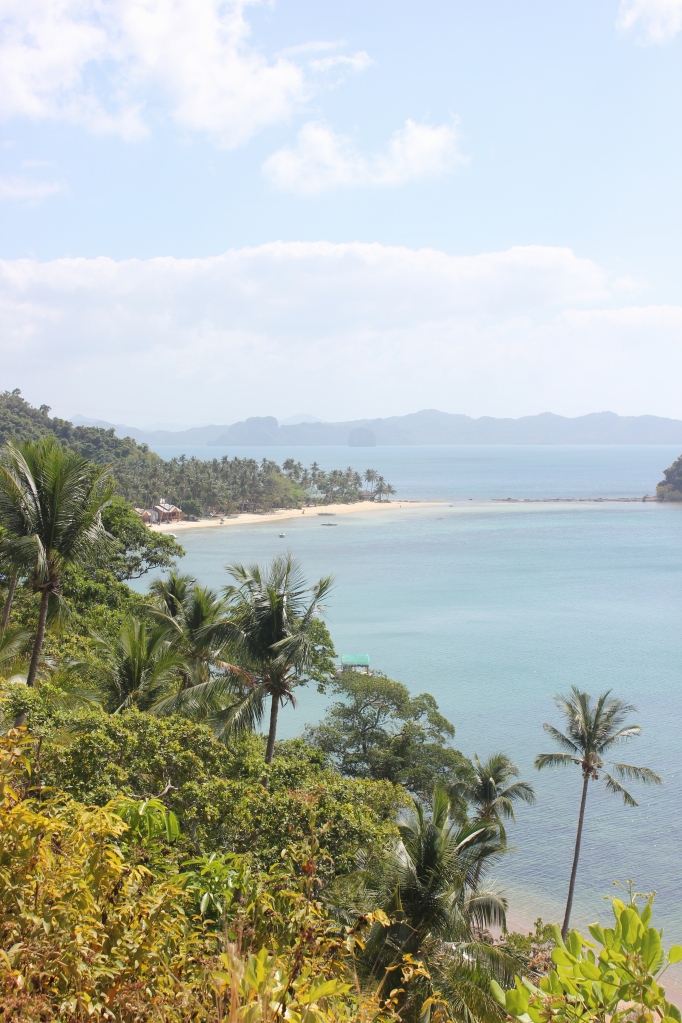
I carried loads of fun that evening to my hotel. You cannot have such interesting and friendly conversation anywhere else in south-east Asia. Educated bartenders and hilarious entertainers. Back in my hotel room a crowd of thoughts ran through me as transformed angels. The words that dominated my thoughts were certainly ‘destiny’ and jing-jing’. We are all curious about our futures, both immediate and remote. Future is destiny. We love to learn about destiny. So, destiny is our jing-jing, isn’t it?
PS: My Pinoy friends have confirmed that ‘jing-jing’ is a rarely used slang these days and that it means a partner for sex!! However, allow me to use it in a milder sense here.

END
Staycation – Time to Learn
The last time I had heard mewling, whining and whimpering sounds was nearly twenty years ago when my nephew was born. The sounds became the norm in our family. Day and night the new-born baby kept his infantile broadcast on intermittently. Those ditties are back in my life in the form of my own baby boy born just a few months ago. I didn’t plan anything for this summer, knowing fully well that my task for the vacation (well, staycation) is well cut out. Spending time with little Keizan and Lina, I found out one thing – staycation can have its own schedules.
Lina and I just spent one and a half day at the hospital when Keizan was born. Things were fine with the mother and the baby after a normal delivery. Come holidays, it was time for both of us to engage and divide our times to take care of our new family member though Lina as mother is taking more than a lion’s share of baby-sitting (lucky male). This gave me ample opportunity to observe from the closest quarter the pain that a woman undergoes during early motherhood. Lina carried her baby bump for nearly 9 months with little Keiz kicking her here and there; all the while she had to take extreme care while moving, especially during late pregnancy. I kept wishing, like a child, that little Keiz burst out earlier so Lina can be relieved soon. Well, as though to accommodate that dubious wish, little Keiz pushed his way out at least four weeks earlier than expected, still weighing 2.7 kg which is normal.
When his head popped out and the doctor pulled him carefully, I thought quickly (and naughtily) that Lina can now wear her tight jeans shorts! What I had in mind was she will now be able to enjoy her normal life without having to carry a bump. That was true, but a more challenging test of motherhood was yet to be.
After behaving quite well for the first 2-3 days, Keiz started showing us what a real infant is like. For him day and night are equal citizens of a solitary country called Time. And he taught us to believe the same. He kept waking up at least 3-4 times at night for milk though it was reduced to 2-3 times during the second month. Now he has a routine at least so we can anticipate his royal wishes. Milk became the ultimate thing to satiate his appetite as well as his early ennui. You might be wondering what early ennui is all about (don’t try to Google it; it’s not any scientific expression, my own coined one). Oh yes, this is what I learnt about infancy during this staycation. Like us the adults, babies need to be entertained each and every moment. Some babies are even more demanding than you would expect, especially boys, like little Keiz.
There are four things which can make little Keiz happy: 1. Milk, 2. Being pushed around in a pram (non-stop), 3. Being driven around in a car (non-stop) and 4. Being laid in a tub of warm water. However, the last three have their own time out condition and will have to be quickly followed by the first one. That first one can probably go on forever, as long as the universe lasts. I don’t think this specifically applies to Keiz. Most infants will have more or less the same preferences though exposure to music and toys might make them slightly different from Keiz.
We keep trying to engage him with little toys and interesting music and sweet little conversations, but he doesn’t seem to be amused that much. He accepts these desperate efforts only as a last resort, when he is tired or not in a mood to be nipple-stuck due to full stomach.
Whatever the inconveniences your changed life has carried to you, you will still love the whole experience. When your baby mewls, incessantly, you naturally tend to lose your cool (especially starting in the second month) , but just glance at his/her face, there’s a charm that will transform all that impatience and fussiness into something lovable and dear, reminding you that your child’s impatience and fussiness are not that different from yours.

***** ***** ***** ***** ***** ***** ***** *****
Well, as I am on staycation, I do not have too many opportunities to keep my photography going, but that doesn’t mean I don’t venture out at all. When little Keiz went to visit one of his aunties with Lina, I sneaked out to Kota Tua (Old Town) in Jakarta and had a great time clicking some street scenes. It was quite hot that afternoon, but street performers and vendors kept everyone busy and excited. I happened to see one dressed up as the Hindu monkey God, Hanuman and performing a levitating trick by holding on to an iron post and sitting on air. Nearby him was a veteran-looking musician running musical marionette show. His music and the marionettes were the cynosures of all eyes. Further into the street leading to the Transjakarta station, people were posing in front of vintage cars and motor cycles. A youngster was almost having a photo shoot with his friend shooting him in multiple poses on top of a motor cycle a couple of times bigger than him. Terminator for a moment?

***** ***** ***** ***** ***** ***** ***** *****
Back in my study, I lazily got into blogging and writing some new articles, plus the painstaking, yet interesting job of transferring and editing those innumerable pictures from the DSLR. Meanwhile, the social media has always been a great companion. I have been enjoying participating in the social media engagement initiated by UK-based travel blogger Emily Luxton. It brings in many interested travel bloggers who appreciate one another’s posts on different social media platforms. Keep up the great work, Emily.
***** ***** ***** ***** ***** ***** ***** *****
And, oh, I have been reading, too. Tony Wheeler’s ‘Unlikely Destinations’ has been inspiring me immensely in the last few days and has the potential to change the way I look at challenges. He is an incredible guy who has an incredible wife in Maureen. Those who are not familiar with Tony and Maureen, they are none other than the founders of Lonely Planet, the world famous guidebook series which made travellers from all over the world better informed and better inspired.
END
Tattoos and Taboos
Recently, Rachel Brathen, a popular yoga instructor and Instagrammer under the handle @yoga_girl posted a picture of her right ankle with the sacred ‘OM’ tattoo on its rear. Kudos flowed in from her fans with many finding her style of display to be a model for themselves. But among roses were thorns; unhappy about the placement of the tattoos. Some voices were confident that part of the leg or anywhere below the waist were not niches for the divine ‘OM’. Those who supported the @yoga_girl elevated her to a status where she can do nothing wrong. The why/why not theories were hardly expounded or even hinted at. The truth is, no one is really sure about the truth.
Tattoos have been in the news again in the last few months. The arrests of British tourists in Sri Lanka in April of this year (Naomi Coleman) and in March 2013 (Antony Ratcliffe) over Buddha tattoos may not have been welcome news to many religious tattoo enthusiasts. The arrest and the subsequent deportation of these tourists revealed how strict Sri Lanka can be regarding treatment of religious symbols. The report revealed that the said tourists had been to other Buddhist countries like Myanmar without encountering frowning faces. So how do regions vary in their interpretations of things religious and sacred? Also, how thoughtful should we be of regional customs and traditional beliefs which may not necessarily have their roots in religion?
These are posers to which finding convincing answers may subject experts to reinvestigate their findings and common men to a bit of soul-searching. As the scriptures are silent on the etiquettes of exhibition/placement of religious symbols on bodies we may have to depend on religious gurus for their interpretation and inference from customs and traditions. The ritualistic practices in Hinduism are countless and varied that they may dare rival the number of words in a dictionary. Within India one may find contradictory practices being followed when travelling from Kashmir to Kanyakumari.
To illustrate this point I would like to zero in on an interesting question that many Indians encounter when eating at restaurants abroad. “Do you eat beef?” People in the south-east Asian neighbourhood where I work have categorised almost all the Indians as non-beef eaters. They are only disillusioned at the sight of an Indian consumer slicing the tenderloin ribs. Some waiters double-check with the customers while ordering and when told that they do eat beef, their face seems to gesture a question: “Isn’t it anathema?”
Food or tattoo, customs maintain a peremptory communication with followers everywhere. Those who listen will abide by a norm which has no love lost with freedom of interpretation. Breaking the rules is often subjected to blind scrutiny by means of scorn-spitting vocabulary and even legal action. While these customs, some of which even take legal form (as in Sri Lanka), are purely regional, lead us to a never-ending tunnel where universal applicability of religious practices (if any) fails to find light at the end. So, what if a foreigner pays respect to your culture in an ‘inappropriate’ way?
Ignorance is blight. Experts are divided over religious Dos and Donts as much as common men are. You may be pleasing one big half of fans as much as you are disappointing the other through your interpretations of religious symbols and their displays. The right and the wrong are also decided by the pleased and the disappointed. As we do not have one super authoritative voice on religious customs, our arguments remain inconclusive and insoluble.
In the case of the tourists, it was tattoo forbidden. In Rachel Brathen’s, it was tattoo misplaced. Though neither Hinduism nor Buddhism speaks anything solidly against the use of tattoos or placement of tattoos, customs have taken shape over the years and are embedded in the core of religious and social life. As customs get contradictory to each other, endless debates take place on the veracity of religious practices. Added to these are foreign interpretations of cultures which can at times be mature or flippant.
END
A Border Patrol along Kerala-Tamil Nadu (south India)
The Western Ghats and the Nilgiri hills on the borders of the south Indian states of Kerala and Tamil Nadu are home to some of the very amazing mountains and forests. The eco-system of these forests is so tangible that a tourist taking a ride here from a nearby town will feel the air caressing him. The difference in air is highly palpable and the peacocks’ cries are the first sounds to greet you as you enter the Parambikulam Wildlife Sanctuary. Being dense forests, it is not easy to spot animals here unless you decide to stay in the sanctuary and do trekking with guides. The most common animals that you will certainly come across without difficulty are spotted deer, peacocks, kingfishers. With a little patience and a bit of luck you may also see Gaur (wild bison) and the Sambhar deer and some black macaques. The elusive elephants and the hiding don, the tiger always maintain their territories in the unreachable interior jungles. While trekking, it is a good idea to pursue the bamboo trees’ paths to look for elephants. It is sad to learn that only around 1706 tigers are left in the Indian wild.
The Peacock, India’s national bird
I am happy to see that Parambikulam tourism is getting more organised these days. Tourists are not permitted to take their vehicles into the forest to avoid littering and harming of animals. The forest reserve has its own vehicles to take them on a trip inside. The park’s website – http://www.parambikulam.org – is impressive and provides information on package tours, accommodation and the reserve’s eco-system.
Spotted deer, easy to find in Parambikulam Wildlife Sanctuary.
On the other hand, Munnar presents a totally different picture. As the car climbed the hills one by one, it became very cold and we were lucky to reach the park’s entrance early in the morning to avoid crowds. Tourism is on high here and much more popular compared to Parambikulam. Resorts, restaurants and recreational areas abound to welcome both domestic and foreign tourists. Though there is a wildlife park here, the glitz is all about the romantic destination which can attract couples and families. The king of the jungle here is neither the lion nor the elephant, but a suave and harmless Nilgiri Tahr (popularly called ‘mountain goat’) who may at times come very close to you. It looks very much a domesticated animal, however, the Indian government has listed it among protected animals as the species is now considered endangered.
The Nilgiri Tahr
The park is also inhabited by numerous species of birds such as the Red-Whiskered Bulbul and the Wagtail. Club Mahindra has a resort on the hills of Munnar.
Red-Whiskered Bulbul
END
Freedom at Fourteen Thousand Feet (Excerpt from my article on Lake Pangong, Ladakh)
After 6 hours of uphill driving, passing by one of the highest roads in the world, Chang La, Lina and I feel the air around Pangong Lake. A fortress of mountains around us acts like a bowl which seems to hold us gently and lay us softly on the mildly meandering lake. This is the place that we had a tryst with; where we can feel the sheer chill of the water, watch gem-like pebbles through Pangong’s translucent water and behold the firmament that showers cold winds with a soothing sunshine.
We are miles away from the town of Leh, Ladakh’s capital in northern India. A stone’s throw away from the banks of Pangong is the Indian Army’s station, but that’s the soldiers’ permanent home; no threat to your free wings. Our backs still ache from the unpaved road’s zigzag rhythm; our plans of finding that vantage tripod position and spotting a different angle of the lake go invalid for the moment. The varying hues of the lake, – now blue, now grey, now turquoise – according to differing levels of sun exposure, mesmerise us at once. Lina gets down to a narrow dyke-like formation created with pebbles beside the lake’s bank. She picks up a shiny pebble, tosses it once or twice in the air, looks at the Himalayan ranges in the distance; then ululates in unbridled excitement before throwing the pebble directed toward the mountains. The pebble shoots up and then after a few seconds, somewhere far from us creates a hardly audible plop in the water. I haven’t seen her so loosened up in a foreign realm.
END
A Tryst with Betang in Central Kalimantan
Driving along the less crowded and almost empty highway from Palangkaraya to Gunung Mas district presented a different experience. There was no flurry of tourists with their Toyotas, Hondas and Mercedes and the giant, space snatching Bus Pariwisata which could be nightmares on your way to Puncak or Bandung. Though it was way too long a journey, it got more interesting as we got down to the unpaved road which is usually only used by coal miners and stationery transporters. The wheels had to trample on large-sized pebbles and uneven sides of the road, not to mention those fearsome steeps which my driver managed to conquer with enviable ease.
Being in a Betang or the long-house of the Dayak families was something I was eagerly looking forward to during my trip. The joint family system is nothing new to Asian cultures nor is it unique to any particular world culture. The life style is something which separates the Dayaks from the other people who live together as families. Betang is the best example to prove this. Longhouses were native to many cultures in Asia including Vietnam and even in Europe during the Viking Age. The Betang stands out among the rest with its artistic design and length.
The Betang at Gunung Mas was founded by a man named Toyoi back in 1869 as is mentioned in the genealogy tree which is displayed on a wall at the centre of the house. The current head of this particular family is a young man called Boni who is only 25 years old. Though there are elderly ladies in the family only male members are entitled to head the family.
Most of them are adapted to modern ways of life and they don their traditional costumes only to perform dances and ceremonies. Farming is their main calling and they cultivate vegetables, fruits in addition to rice. Many of them also depend on forests for food and money. Ever since proselytisation, the Dayaks have been divided in their choice of style of living and profession though the understanding within the mother culture and heritage has been the same.
If you are not previously familiar with a Betang you could mistake it for a factory or even a temple at first sight. This one at Gunung Mas is one of the most prominent in Kalimantan and it holds 6 families together. The Betang consists of 10 bedrooms, (though some of them are said to have as many as fifty) a long living room and two kitchens which are located at either end of the Betang. The inner construction is very symmetrical with the bedrooms juxtaposed and facing each other and at the centre there are facilities to seat the guests. The Betang stands on long stilts and a flight of stairs leads to the main entrance. There are three entrances, one each at either end and one at the centre. The Dayaks’ gods are hoisted on stilted poles in front of the Betang. This is a sight reminiscent of their head-hunting practice in the past.
The elderly ladies with their fans sat on the floor and served me with hot tea. They looked relaxed and were happy to chat with an outsider. Upon arrival of a guest the children were disturbed from their playground outside and asked to sit down with the family. It was custom and they were obliged to pay respect to guests. The Betang can be very warm during summer as it is totally wooden and electricity is yet to illuminate this small village which is close to the interior Bornean forests. As is common to all traditional families they have their own totem which is placed on the ceiling just above the threshold at the entrance of the Betang.
END
Revisiting Kampung Pulo and The Temple and The Tomb
The village Cangguang sits in the Garut Regency of West Java, an hour from Bandung. In the middle of Situ Cangguang (Cangguang Lake) is situated a very small household called Kampung Pulo which consists of just six families. A tiny village of six families with exactly six houses. In the housing compound you will, as a first-timer, discover an 8th century Hindu temple and a Muslim tomb side by side. Both were probably discovered in 1966 based on a Dutch explorer’s report. Arif Mohammed, a soldier fighting for the Mataram Kingdom against the Dutch forces in the 17th century, failed in his attempt to topple his enemies here. He did not return to the Kingdom’s capital, Batavia and remained in Cangguang to preach Islamic ideals to the local Hindus. After his death, his folks may have buried his body next to the temple. The discovery of his tomb next to a temple surprised everyone in that age. I am on my third visit to this scenic and historical village by the lake to talk to Tatang Sanjaya, the current head of the families, descendant of Arif Mohammed, at Kampung Pulo. Follow me on my trails on 14-16 October, 2014.
Taking a bamboo raft to Kampung Pulo
END
Tibetan refugee markets in leh
There are plenty of them. They are probably the best spots to buy souvenirs and showcase items in Ladakh. Though these are not permanent markets, as they keep moving from place to place, the Tibetan refugees have kind of set up their niche in Leh’s town labyrinths. Many of their displayed items cater to Buddhist worshippers. Idols of Buddha, prayer wheels, prayer bowls, short statuettes of gods, hand mirrors are neatly arranged in exhibition style. A lot of bargaining is required to come down to reasonable prices for these articles. All the markets have common items though the bigger ones have more selections. Take a walk along Leh town and you will come across these markets on the left and on the right.
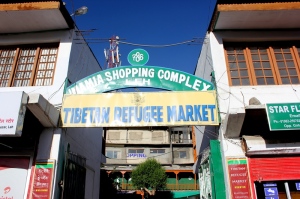
END
5 days in sabah, malaysia
I had been keeping a close watch on KK’s weather pattern for weeks before my travel. It had been wet and was wet when I landed there and took a taxi to my hotel at Kampung Air, the centre of the city. The mood was a bit down as it could be the prelude to the wetter days to come. I stopped thinking about it too much as I was too tired after the midnight flight.
Day 1
Got up around 8 and what I saw was perfect, sunny sky which is typical of a tropical country. It was going to get hotter though. Took a stroll along Kampung Air and found life waking up slowly. Amazingly, the small restaurants open as early as 4 am here to serve brekkie to the working class. Plenty of them serving ‘Islamic Food’, spicy and with many choices.
Later in the day, I drove to Tanjung Aru beach and was attracted by some birds who must have strayed away from their sanctuary at the Sabah Wetlands. Watched an egret taking off and busily flying off to a certain direction in the east. A red-breasted pigeon became the cynosure of my lens while it was relaxing on a twig of a tall pine tree. Heat can be wearying, so walked to a popular seafood restaurant – Tanjung Aru Seafood restaurant where I had fried snapper with rice and vegetables. Pricey but good food. This restaurant gets very crowded for dinner and all times on weekends.
There was drizzling in the evening, but it didn’t stop me from walking to the Waterfront where watching some urchins jumping into the sea from the wharf was a sport in itself. One of the best places to watch sunset with anchored boats, ships and dinghies dotting the calm water. There’s plenty of fish in the night market next to the wharf. I would go there another day. The Waterfront has a row of restaurants and pubs which make up a romantic atmosphere. The Indian restaurant Kohinoor, was a bit crowded and I walked in to taste some snacks. The samosa didn’t please me as it was nowhere near the usual addictive taste. Walked all the way to Seafood Village in kampong Air for dinner. Live fish and other seafood. Great prices and great food. Crowded.
Day 2
This is the day I was looking forward to. Set off for Kota Belud, an hour and a half drive from KK and approached the kawa Kawa river along the Bajau people’s settlement. Started kayaking with Megan and Alex from Borneo Wavehunters watching the endless rainforest and the mangroves. Stunning! The woods hide swampy marshlands and flora and fauna. The Proboscis monkey lives here. Back to the jetty after 2 hours and I had traditional Malay food for lunch with snacks.
Drizzling evening again. I have already studied the weather pattern now, sort of. No longer worried about the next few days being showered upon. There is a night market right in front of my hotel at Jalan Sentosa. Very kitsch items and nothing new.
Day 3
It was a birdy day. The Sabah Wetlands Centre is only a few kilometers away from downtown KK so I took a taxi and reached there at 8.30 am to be the day’s first visitor. The bird sanctuary spreads across many acres of wetland with dense mangrove forest. There are wooden planks serving as walkways. A lot of patience is required to see the birds and a lot more to photograph them. But they all greet you with their variety of whistling and tunes. Look down when you walk on the wooden bridge as there is a nether world which holds amphibians like fiddler crabs, dog-headed snakes, skinks and oysters. Beautiful place, utterly calm and a different world. Feels like being in an avian ashram. Took a taxi back to town. Dropped in at CenterPoint, a mall. Lunch at Kedai Makan Islamic (tasted very Indian).
The early evening drizzle didn’t affect anyone’s movement. No umbrella was raised. I set off my second visit to the Waterfront and this time I started with Pasar Malam, the night market. They have food on one side and on the other, fresh fish, chicken, meat and vegetables for sales. It’s a very busy area, but I moved along to the wharf and got bewitched by the cloudy sunset. Dinner at City Food Corner, a popular haunt among the locals. Self-service. They have delicious food from the Malay Peninsula and various desserts. Moderately priced. It’s just a stone throw from the Waterfront.
Day 4
I was trying to get into the cultural life of Borneo today. The best place to meet up with all the main tribes of northern Borneo (many of whom are leading modern ways of life now) is to take a trip to the Mari-Mari Cultural Village. I met 5 different tribes and learned about their cultures in brief formats. The head-hunters are what I would like to learn about in detail. All the tribes mingled and combined in the end to host a dance and music performance to finish the day. Great food at the Village.
Day 5
I visited the Lok Kawi Wildlife Park, half an hour from KK. Took public transport from the town for the first time. Small vans with numbers take passengers to different destinations. I got into 20A which dropped me near my destination. I had to take a taxi from there to make it to the Park. The Park has some Bornean species and also has an animal education show. However, the avian sanctuary was closed for maintenance. Having seen Taman Safari in Indonesia, I was a bit disappointed with what I saw here. It’s nothing different from a zoo.
END
Mesmerised in Mysore
Aficionados of art and culture throng to Mysore to explore its rich aesthetic past which has been immortalised in many forms – woven intricately on the famous Mysore silk sarees, brushed meticulously on the walls of umpteen numbers of palaces and carved to perfection on religious places.
The present-day Mysore is a city which keeps its culture and monarchical past alive for the serious student and the tourist. Located in the state of Karnataka in southern India it is easily accessible by road from Bangalore, the state capital. Many international airlines fly to Bangalore on a daily basis.
Mysore derives its name from Mahishasura, a demon king who ruled the place according to mythology. Goddess Chamundeshwari killed the demon king in a fierce fight and gave freedom to the suffering subjects. The Goddess’ temple is situated on top of the Chamundi Hills which can be seen from several parts of the city. Right on the footsteps of the Hills is erected a statue of Mahishasura. A huge statue of Nandi, (the bull) the vehicle of Lord Shiva is also situated atop the Hills.
Mysore’s main attractions are its palaces and architecture and it’s aptly called ‘the city of palaces. Facets of creative architecture can be seen inside Mysore Palace or Ambavilas Palace which is now maintained by the government. It was partly inspired by the Indo-Saracenic style. Indo-Saracenic is an architectural form which is a combination of Indo-Islamic and European Gothic styles. The interior is a true symbol of the Hoysala (during the rule of the Hoysala kingdom) style of construction. The Mysore Palace is illuminated during weekend evenings. Both locals and tourists gather to witness this starry sight. The other prominent palaces in the city are Jaganmohana palace(an art gallery), Lalitha Mahal(converted to a five-star hotel), Jayalakshmi Vilas and Rajendra Vilas. A little away from the city, at a historical town of Srirangapattnam, stands Tipu Sultan’s summer palace. Tipu was a brave Muslim ruler who died fighting the British army.
Influences from the Western world on architecture can be seen in St. Philomena church which is arguably the tallest church in India. This church was constructed in 1936 in honour of Saint Philomena who is said to be a young Greek princess martyred in the 4th century AD.
What land is there sans festivals if it has palaces and a history of art and architecture? Mysore’s Dasara season is very popular and the traditional wrestling competition during this season is intact even today. Dasara is celebrated over a ten-day period. Mysore wears a colourful outlook during this jubilant time. On the tenth day, called Vijayadashami, the traditional Dasara procession is held on the streets of Mysore city. An image of the Goddess Chamundeshwari is placed on a golden niche on the back of a caparisoned elephant and taken on a procession. This is accompanied by a variety of pageants that include tableaux with themes chosen from popular Indian epics.
If the main feature of your travel is shopping, don’t be disappointed. Mysore has exotic items to offer you near all the tourist attractions. Drape yourself in a richly hand-woven Mysore silk saree (Indian traditional dress) which becomes the cynosure of your eyes when you step into those innumerable emporiums. Sandalwood products are highlight of Mysore shopping and most of these are expensive. If you are planning to buy souvenirs try out those enticing sandalwood perfumes, soaps and cosmetics which can be had for one or two dollars. Famous paintings and artworks are also offered in the commercial markets. The Mysore painting style takes cue from the Vijayanagar (the Vijayanagar Kingdom of Mysore) school of painting. King Raja Wodeyar promoted this style of painting in his reign. One unique feature of these paintings is the pasting of gold foils on them.
Mysore receives rainfalls from June to August normally. Barring this period it has a pleasant weather and the air maintains a salubrious state.
END
Whiling away at Jatiluhur
Jatiluhur lake, the dam and the nearby picnic spot are a great rendezvous for people to gather during Id-ul-Fitri. Every year, the place gets filled with thousands who make a carnival and enjoy their food and drinks after prayers. They celebrate the day with colourful fireworks and the party gets extended to the wee hours next morning. Just one and a half hour drive away from Jakarta it is easily accessible to the city-dwellers too. Even on casual days it is common for people to spend some time sitting in the sylvan surroundings or saunter on the esplanade near the lake. Fishing is another favourite pastime of people who frequent the vicinities of the dam. The dam was originally built in the 1950s. Water sport recreation centre at the lake includes boating and water ski. In Jatiluhur dam, there is an Ikan Keramba Jaring Apung or Keramba Fish Floating Net activity that could become a distinguished activity in the dam. A bit further up the lake there is a rocky hill from where trekkers might find a beautiful view of the panoramic landscape. Masjin, a local Ojek rider hopes to have a good time this Ramadan and he wants to draw the attention of local tourists to Jatiluhur lake.
END
Pantai Mutiara – North Jakarta’s serene rendezvous
After Ancol this could be the best spot from where you can have a marvellous sight of the horizon at dawn and at dusk. Pantai Mutiara has a vast seascape with a quay to harbour speedboats and jet skis. With a few palatial houses and some apartments including the sail-shaped Regatta nearby the unpolluted surroundings are less crowded than Ancol.
It’s meeting spot for many in the evening as the street has several seafood restaurants which open only for dinner. The Jet Ski Cafe has a deck jutting out into the sea where you can dine savouring exotic dishes. Located nearby are a swimming pool, The Pool, a club which offers billiards, Tennis, Table Tennis, etc.
END
Jakarta’s Holiday Countenance
Tourists who transit in Singapore, Kuala Lampur or Bangkok may not have Jakarta written in their itinerary as the Big Durian has never been part of the traveller’s kaleidoscope. However, for those who are nestled in their dwellings in the city a search within will help reveal its beauty in various forms. Old Batavia, the areas near Kota and the adjacent west and north Jakarta parts have always been a researcher’s paradise and an unfailing rendezvous for umpteen numbers of teenagers and youngsters. Holidays and weekends bring them to Taman Fatahillah’s lap where history, in the forms of pillars and cannons, witnesses 21st century updates. In addition to tourists and revellers there is a host of vendors who provide the latter with manna under an excruciating sun and entertainment which is as invaluable as their sojourn at the favourite tryst. ‘Ten thousand saw I at a glance/Tossing their heads in sprightly dance’ echoed in my mind when I saw the array of wedding bicycles ready for hire. Beautiful straw hats adorned with flowers decked on charming bicycles which look like vehicles of imagination with a surreal aura are certainly an alternative to the bard’s daffodils. A few metres away, another fashion vendor gets busy with his optical exhibition. He has a few couples in mind who may try to enhance their visages by donning his kitsch sunglasses. Juxtaposed with this man is the kite-seller. His target is yet to be seen in the view. The families have not arrived yet with their demanding children. The kites are specially meant for them though the childish veins may also prompt the young lover to purchase one for his beloved. Holding the flying kite together nevertheless is a romantic activity. At least some commercial videos have proved this true.
Waving hands to a handful of German tourists at Kota I head towards Monas, another holiday gathering spot. The park is slowly getting busy as gates have been opened only minutes before. Times have changed a lot but some customs and styles remain the same when you talk about families and their picnics. This man here, holding a child on his waist, his wife holding another on hers, their eldest daughter holding her younger sibling presented a picture of unending (or, should I say, unwavering?) tradition. The children definitely had their curious eyes on the little but glamorous items displayed by a woman vendor from Central Java. My curiosity is to see how the parents react to the four adamant hearts. The eldest daughter is helpful by being mature and she takes her sister to the nearby vendor girl who sells some bright, pink, snack item wrapped in attractive plastic.
The kite-seller is here too. A different vendor, looking more professional and may be catering to the competition savvy men who have a flair for layang-layang. As though providing colours to my eyes a group of teenagers walk in with arms on shoulders looking for a vantage point to capture the moments of the day. Some of them get ready with V signs and artificial facial expressions, smiling lavishly on the lens; straightaway to be facebooked from their Blackberries. I am at Monas, picnicking with pals.
They say Pantai Mutiara is calm and the ocean and the scenic horizon provide solace to the city-weary earthlings. That was reason enough to propel me towards the shore in the evening. Things are a little posh here and we have luxury cars parked by the esplanade. Families come out and perch on the Cornishe verandah enjoying the sight of the long pier jutting out into the vast, endless ocean. Vendors are few or none here as the objective of visitors is pure relaxation and anyone dilly-dallying with that is an intruder.
END
The Land of Coconuts
Kerala is a banana leaf-shaped state in the southern tip of India. The word ‘Kerala’ translates into ‘the land of coconuts’ which is abundantly justified by infinite numbers of coconut trees which you cannot miss while on a bus or a train journey or while landing in any of the three airports in the state. The fishermen and the marine traders of Indonesia may have heard of this tiny state if not the others in the populace here. Trawling brings fishermen from far-away places to its shores legally and illegally. Rice cultivation, traditional ways of lifestyle, greenery and the beaches make it much similar to regions in Indonesia, especially Bali. In fact, some former kings of Kerala’s Travancore area had even traded with merchants of Java. Evidences can be seen in the Palace Museum in Thiruvananthapuram, Kerala’s capital. The Museum has replicas of Balinese dancers, Javanese men and women and a big collection of Wayang kulit shadow puppets.
Kerala’s tourism is mainly concentrated on its beaches and backwaters. New Year time is the best part of the year to visit this place. Tourism Week is conducted by the local government during this time. Kovalam is one of the most picturesque beaches in Kerala. Roughly 12 kms from the capital city this beach is embellished with rocky hills and cliffs on many sides. Ubiquitous coconut trees by the beach side and even on rocky precipices make the spectacle more scenic. The lighthouse tower is hoisted on top of one of the rocky hills and visitors can climb to its balcony to have amazing bird’s eye views. Accommodation by the beach is one of the most enviable parts of your tour. Star hotels and resorts have their galaxy on the cliffs overlooking the ocean. If you are in your hermitage and do not want to fall in the eyes of others you can have sunbath in your room’s front yard. You still don’t miss the beach and the sight of the dancing waves!
New Year revellers are plenty here and most of the locals are friendly. Keralites are very educated and communication is not a problem here. Dubbed as ‘God’s Own Country’ by the tourism department, Kerala tries its best to invite foreign tourists to its land year by year. Special traditional dance-drama performances are arranged for tourists at the beaches during Christmas and New Year holidays. Kathakali is one of the most popular classical art forms of the state. With the help of playback music and percussion, the characters tell a story from the Indian epics. The characters wear rich make up on their faces and don elaborate costumes. The movements of the eye and the body are instrumental in expressing emotions in this art.
Take a 2 hour drive from Thiruvananthapuram towards the east and you are on Ponmudi hills, one of the places where you can have equanimity. It’s tranquil, peaceful and except for the singing winds no other sound can be heard. The structure of the hills and the mountains with the labyrinthine road network which runs through their heart reminds one of the Lake District immortalised by Wordsworth in his poems. Trek up to one of the hills and the sight beneath you is breathtaking. It’s amazing to view the vehicles crawling up the hills with their horns reaching your ears wafted by the wind.
Back to Kovalam again and this time shopping is the only item in the agenda. Garlands, bracelets, anklets and other curious articles made of seashells are available here. Traditional dresses and handbags are plenty in sight. All of them elegantly embroidered with designs of elephants, peacocks and other Indian symbols.
Prices of items are cheap and you don’t need a thick pocket to get oleh-oleh for loved ones and friends. The omnipresent Bajaj will make your transport from place to place cheaper than you would expect. Hotels need to be booked well in advance if you have plans to celebrate New Year here. The Kerala Government runs its own hotel named ‘Chaitram’ which provides the tourists with detailed information on sightseeing and travel.
END
Monuments, Palaces and Temples
The facades of these buildings need to be covered in an appealing way. Three main things to keep in mind before clicking at them are: light, angle and position. Early morning sun is your best friend when it comes to shooting huge ancient temples such as Angkor Wat. In a recent visit to Thailand I was caught up with two challenges – crowds in front of palaces and temples and lack of space to cover the whole parts of facades. I had to wait and wait for the crowds to move away from my line of vision and had to place myself on vantage point to make sure that my aperture doesn’t miss out on any important facet of the grandeur.
To achieve the results, plan your photography in advance. Browse through internet photos of the places you are about to visit and get a rough idea of the place regarding the space available, the sun positions at different times of the day and of course, the angles which have already been covered by other photographers. Be different.
I was lucky at Wat Arun in Bangkok. I reached the temple at 8.00 am (the Opening time) and the temple was all to myself for at least 20-30 minutes. It was a weekday so tourists were not there in large numbers early on though they started coming as soon as I climbed down the steep stairs.
END
Delicious Bangalore –
Every time I get to Bangalore I see something new and something very interesting. At the same time, the traditionally accepted and admired things renew their charm and never show signs of fading. That’s the best part of this fast progressing south Indian city which is blessed with salubrious weather all year around. My sojourn here before embarking on the Ladakh adventure has given me enough time to try some popular restaurants serving both south and north Indian cuisines. On the first day, I started with lunch at Indira Nagar.
1. Ananda Bhavan, 80 feet road, Indira Nagar
May not be highly popular in an Indian city which is replete with choices of veggie food but this two-storey restaurant is very strategically placed at a near a junction where four roads meet. There are business establishments nearby so AB is sure of making brisk business. The first floor is airconditioned and I recommend it for some comfortable dining as you may avoid the constant honking from the vehicles outside. AB is pure veggie and serves all kinds of curries and breads like chappatti, naan, parotta, etc. The Thali meal costs 150 rupees and comes with 10 different varieties of side dishes. I had pulao rice and peas masala which came to 320 rupees. Good prices and excellent food.
2. Mavalli Tiffin Rooms (MTR) – Lal Bagh Road
There are very few people who haven’t heard of this iconic restaurant in Bangalore. Opened way back in the pre-independence era, in 1924, MTR shows the way to others and the public in general how to keep up the tradition in style and yet not lose the royal touch. The humble building lifts its head high no matter what the modern skyscrapers boast about. Only basic renovation has been done to maintain the restaurant from time to time. Afternoon or evening, or early morning (MTR opens at 6.30 am) the place is crowded and for meals there is always a queue. I had their signature rava idli (a variety of the popular south Indian idli, made of semolina), masala dosa and poori masala. Tasty and very addictive. However, what I loved the most is the pudina chutney which accompanies all these delicacies.
3. Bheema’s – Church Street
The locals and the guidebooks and my friends said that Church Street is very hip and happening place. So off I rode to this narrow and a bit curvy street which glitters with multi-cuisine appellations. I had already read about Bheema’s reputaion and knew how sought-after a place it is among the locals and the Andhra community in the town. You rightly guessed, it’s Andhra-style food we are about to savour at Bheema’s. Reminded of chillies and spicy tongues? This time I went for thali meal and I was lucky to have reached well before the usual Indian lunch time. There were tables with RESERVED signs. Great veg thali with several Andhra specialities. I also ordered pomfret fry as my side dish. Halfway, I was full so took my own time to clean the banana leaf. Veg thali costs 150 rupees while non-veg thali comes to about 190.
4. Carnival-De-Goa – MG Road
Have you heard about Goa? How different is it from the typical India that you see elsewhere? Read about Goa’s Portuguese connection and you may find curious facts about this wonderfully scenic beach destination in south-western India. At Carnival-De-Goa, I was almost transported to those shores when beach boys served me Goan style chicken chilly, beef rissoles and pulao. Dining on the balcony was indeed a pleasure, especially when it was complemented by a giant screen TV broadcasting World Cup Football matches. R and B was in full swing to provide the atmospheric feel. For my dishes and a cocktail juice I paid 990 rupees, worth the notes.
END
B88 Hostel, Jalan besar, singapore
Now, I had to collect my Indonesian work visa at the Indonesian embassy in Singapore and was scheduled to meet an agent at Clemenceau Avenue at 10.00 am the other day. Since my return flight to Jakarta was only at 10.00 pm (a full 12 hours long) I decided to check out this new, trendy and youngster-looking hostel at Jalan Besar. With my luggage and documents I surely needed to refresh and rest for the day. I handed over my documents to the agent and hopped on to a Silver Cab and within 6 minutes I was at the B88’s doorstep (close to Bugis). The bus stop is right in front of the hostel. Mind you, most cabbies don’t know about B88 as it is still new and waiting to be talked about. The board on the left side of the main road spared us of traversing the whole street locating the hostel.
I dragged my luggage with a wearied face (after the tiring flight) and the receptionist greeted me with a warm smile. Next to her is a dining area where the table was occupied by a group of teenagers having their brunch. The mini kitchen beside the table has a microwave, dispenser, toaster and dishes and utensils. Noodles and bread are available for extra charges.
I collected my key and a hand towel (extra S$ 2) and climbed up to the third floor and got into an air-conditioned 12-bed dorm. Everything looked so new that you forget the lack of space. The dorm was empty as the occupants were away. I kept my luggage in the locker beneath the bed and made my way to the bathroom. Men’s toilets and bathrooms are situated on the third and fifth floors while women’s on the second and the fourth.
B88 charges 18 Singapore Dollars per night for a 12-bed dorm. All packages come with brekkie. As I didn’t stay for the night I couldn’t enjoy it. Highly recommended for teenagers and 20-somethings. That doesn’t mean oldies can’t get in. One of my dorm-mates looked to be in his 50s or even 60s!










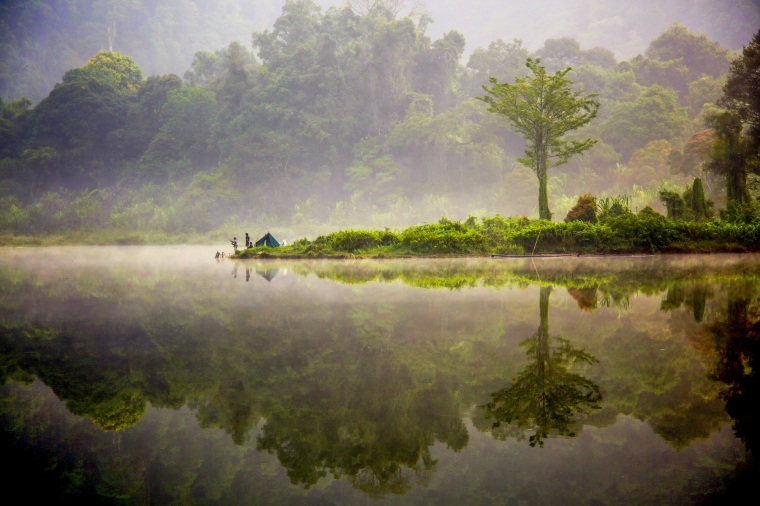
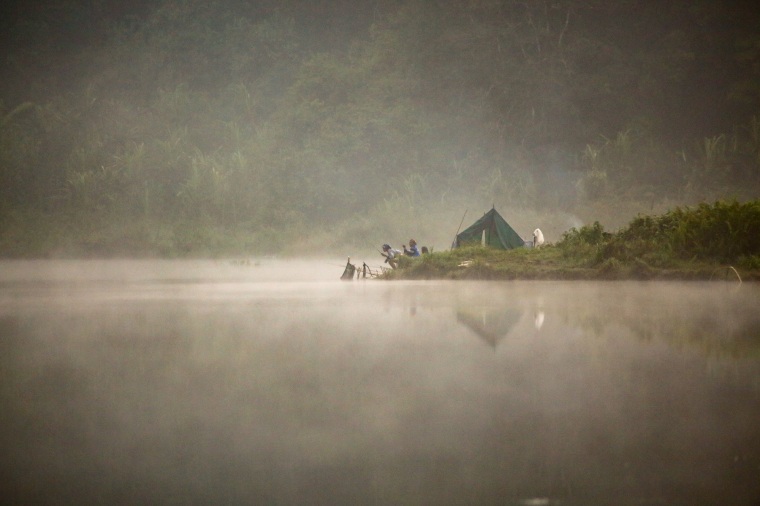
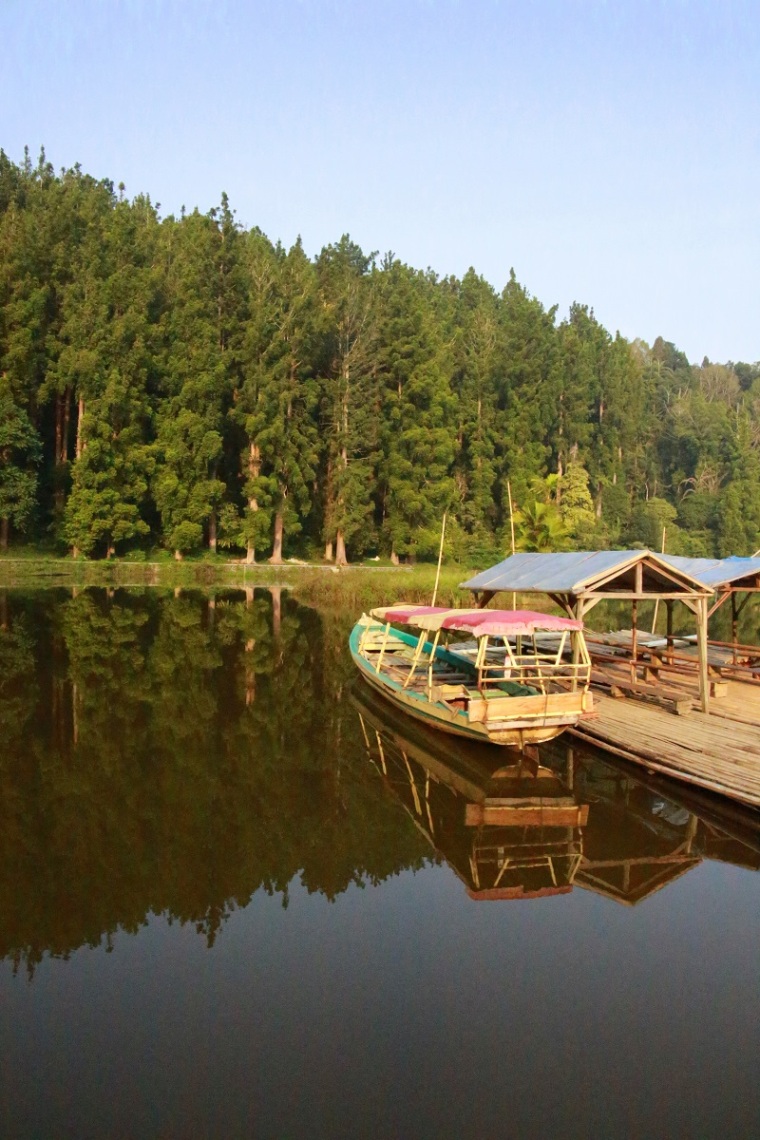







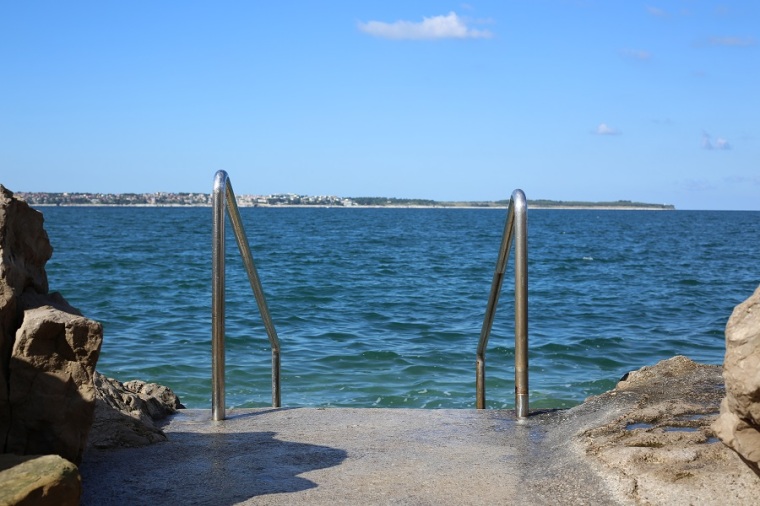
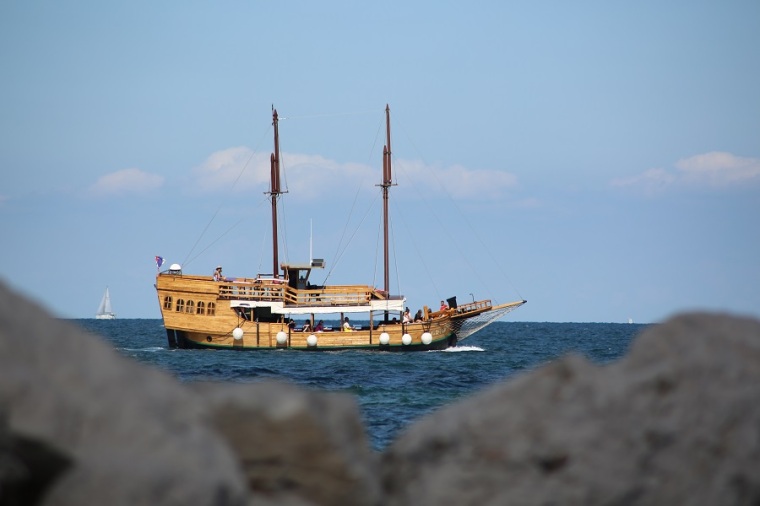

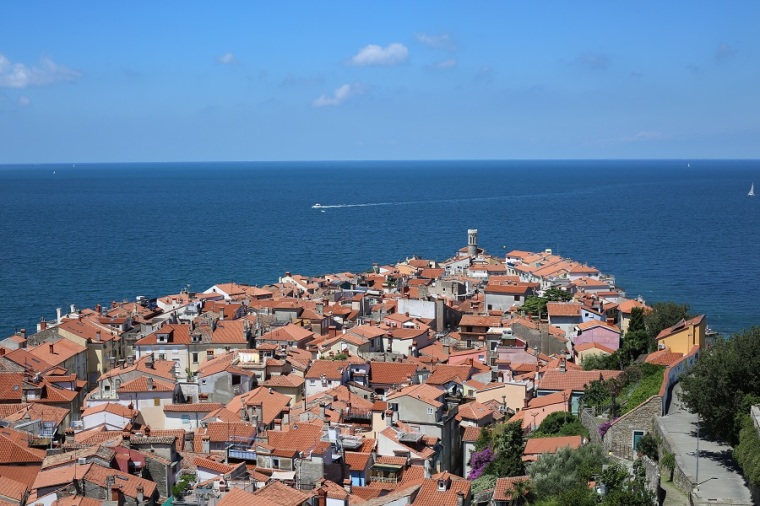

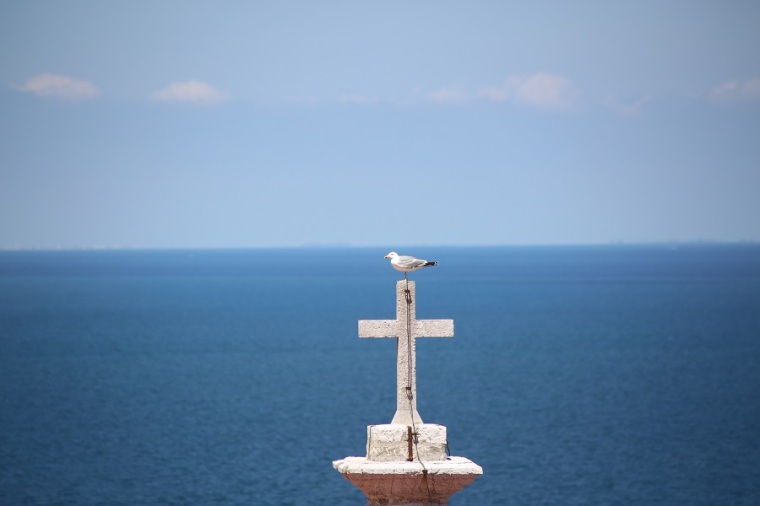
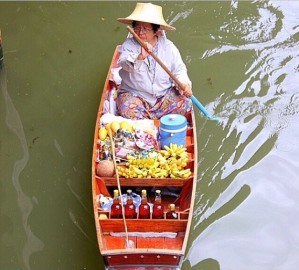


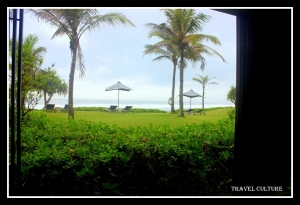
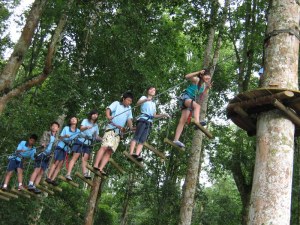

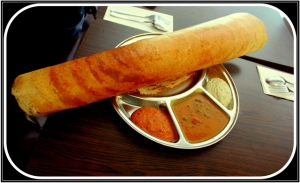


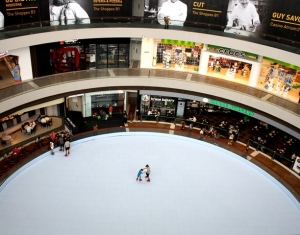

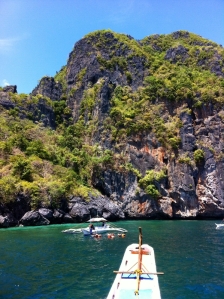

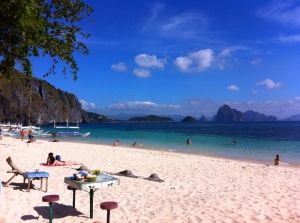
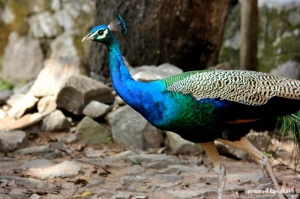



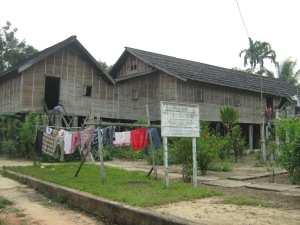
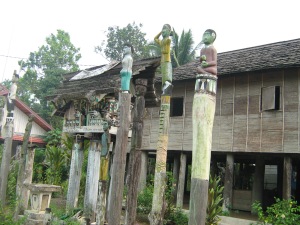
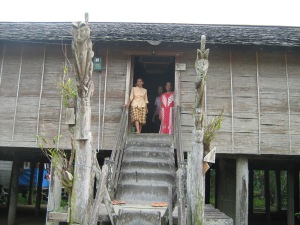

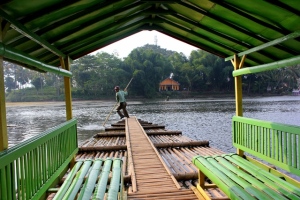
Nice travel insights to be found here. Well written, Pramod, I like it. Let us have “48 Hours in Jakarta” go viral now an were are all set 😉
LikeLiked by 1 person
Thank you very much, Euromentravel. Yes, the Jakarta guide should be handy for many out there.
LikeLike
Have Khajuraoh as my bucket list and now after reading this, will keep aside more than 2 days for it. 😀
LikeLiked by 1 person
Yes, Ami, it’s not just the temples, but the village atmosphere and the hospitable people; all need to be experienced.
LikeLike
This is some great insight and extremely informative. The photos show what an awesome cultural experience you had! I really want to experience this some day.
LikeLiked by 1 person
Looks so beautiful! Thanks for sharing! 🙂
LikeLike